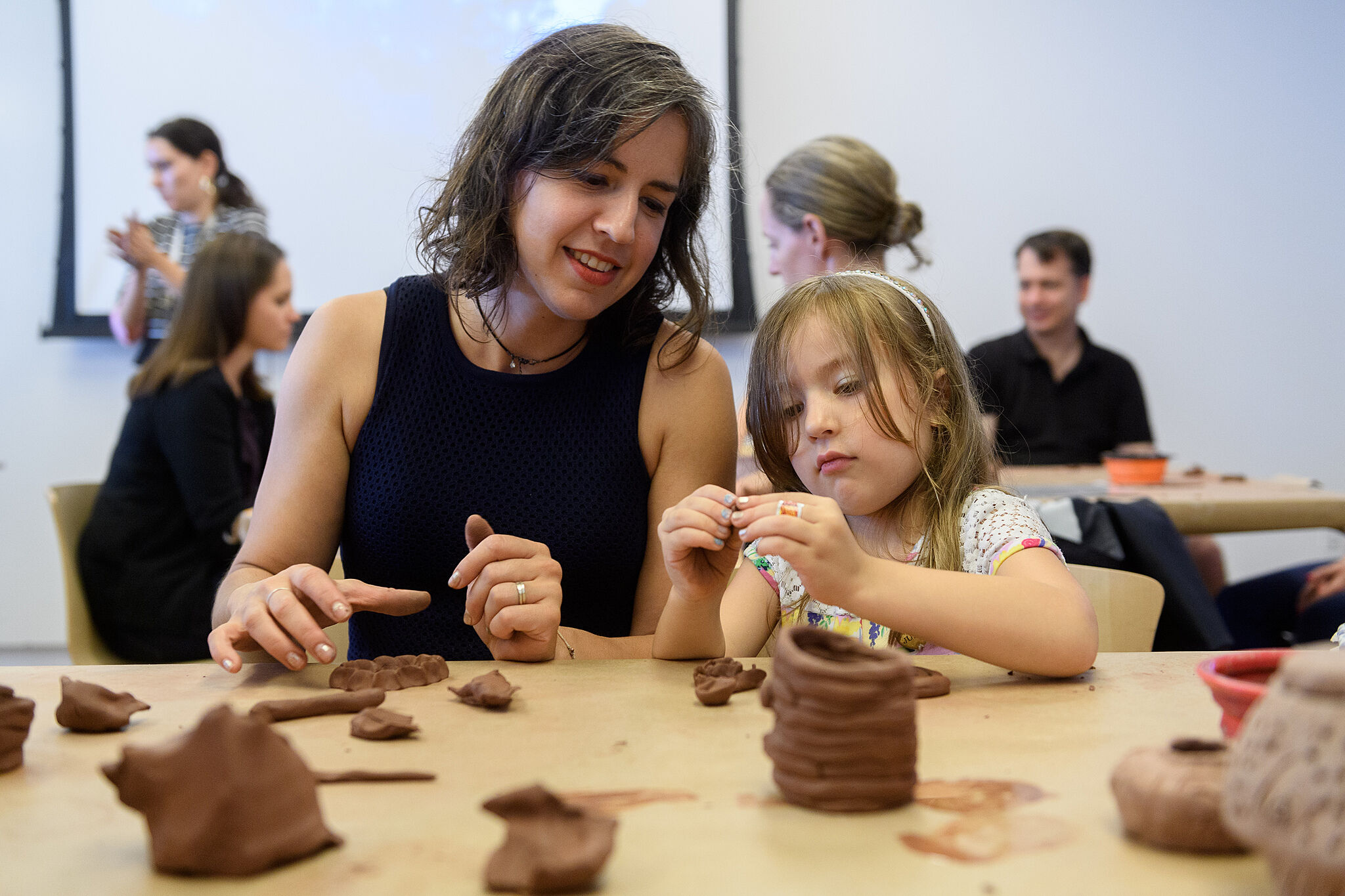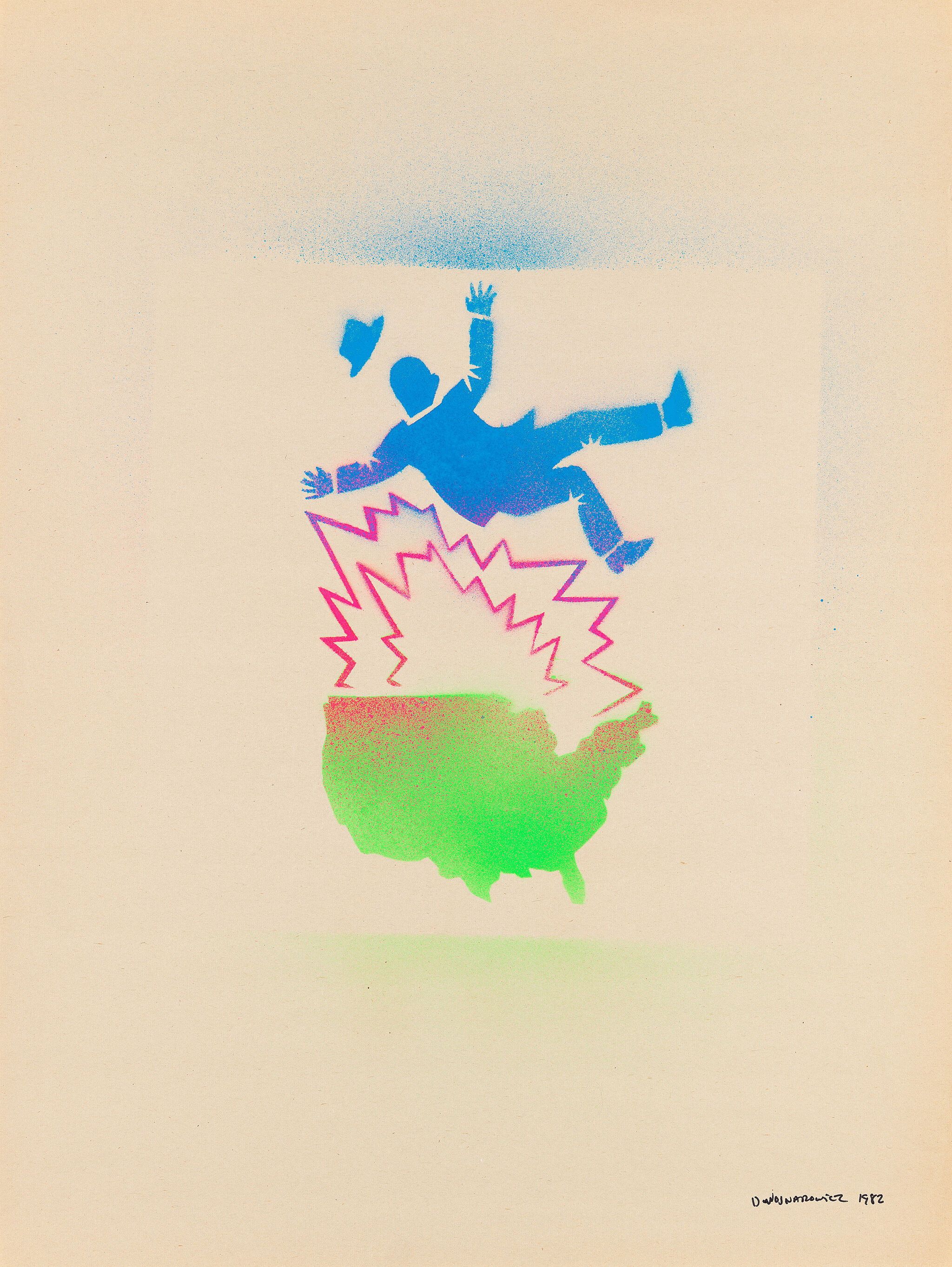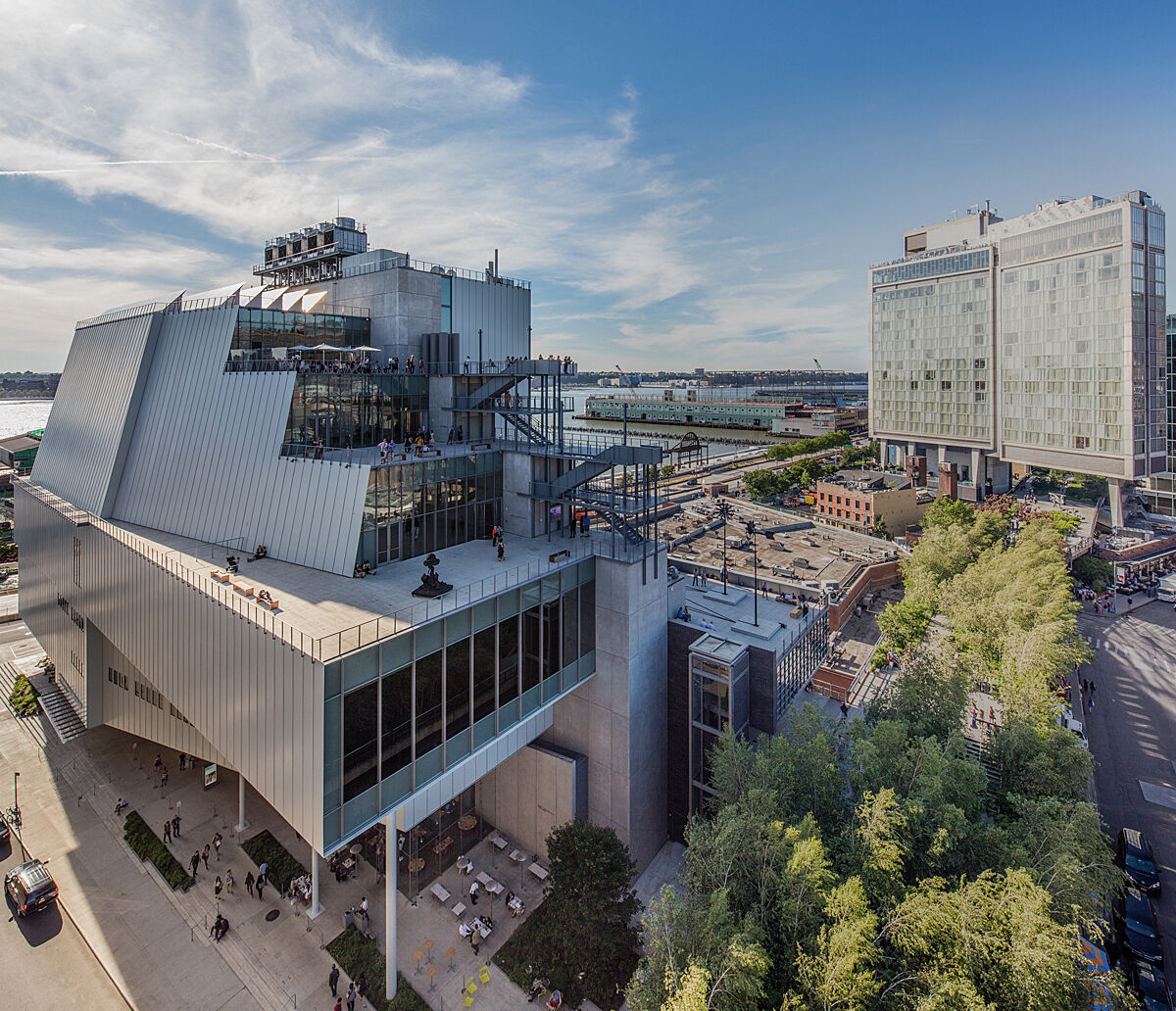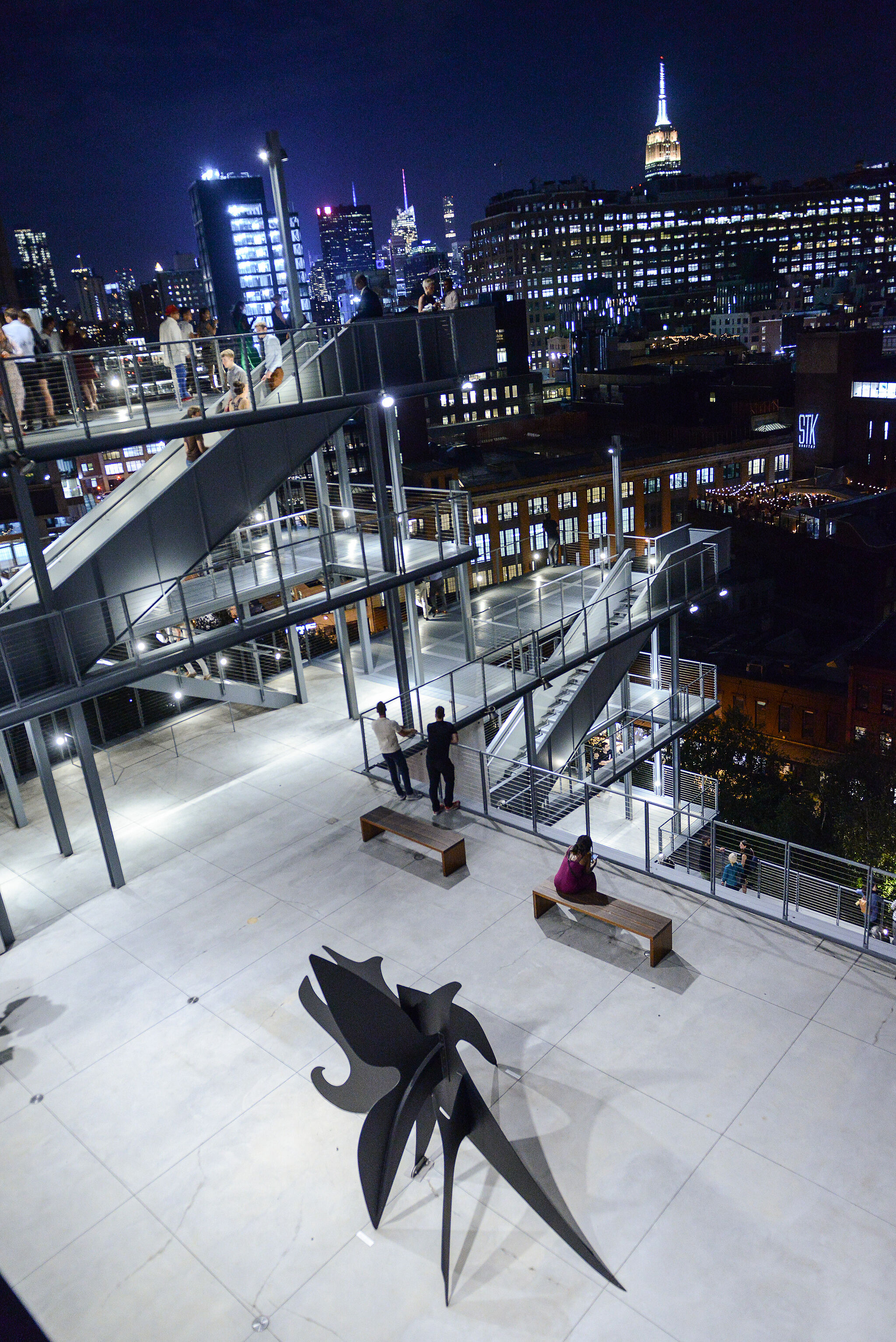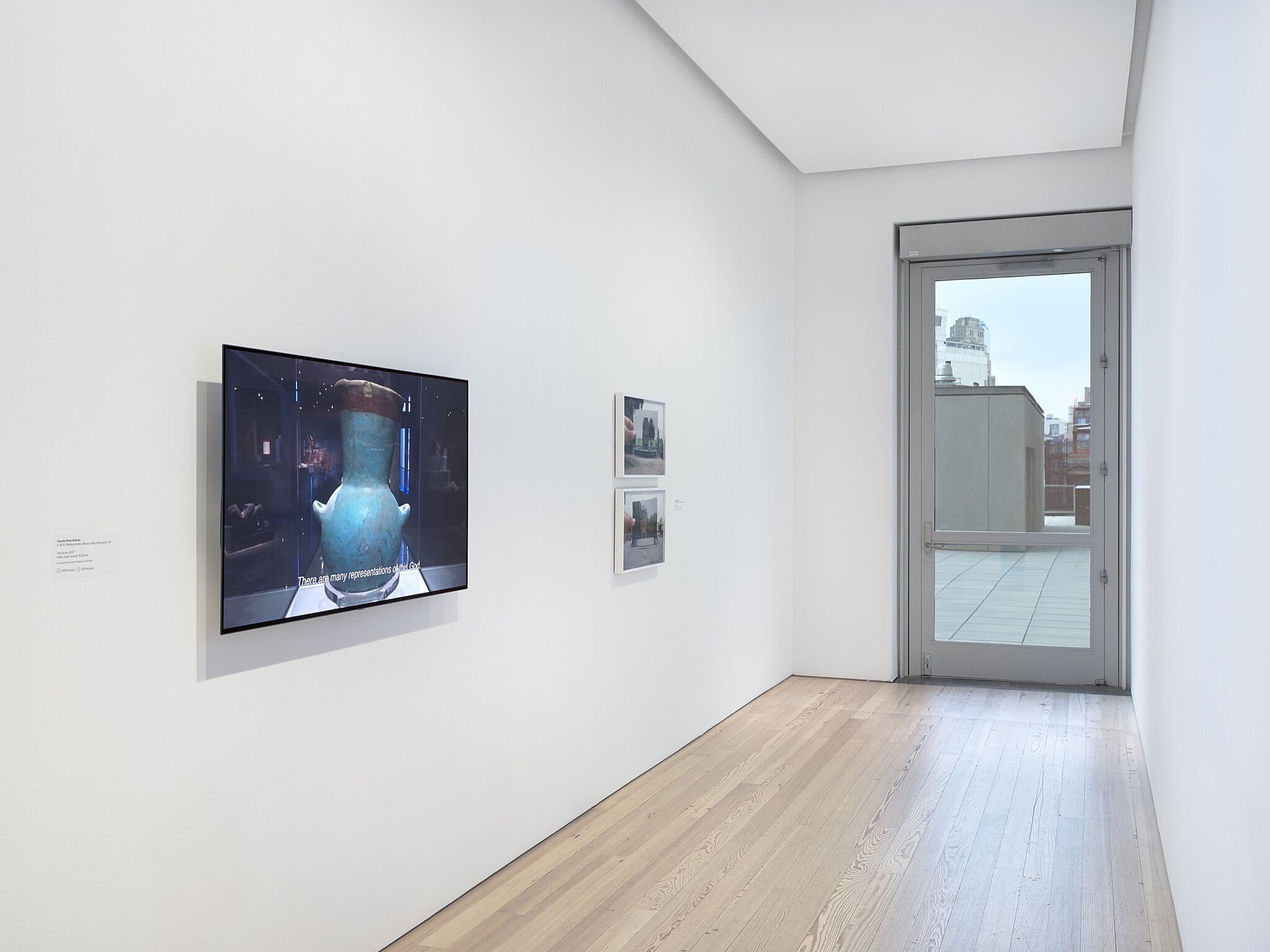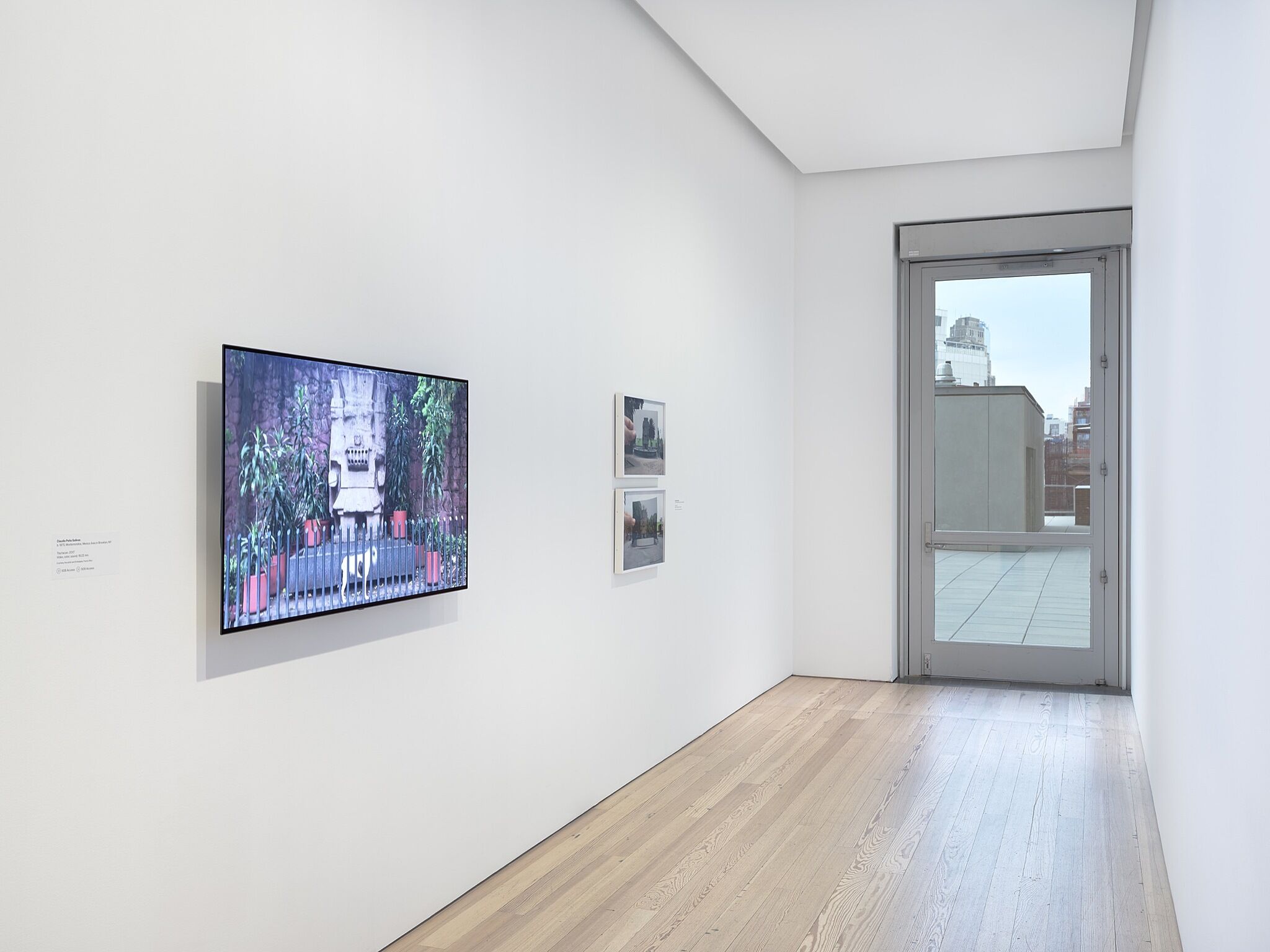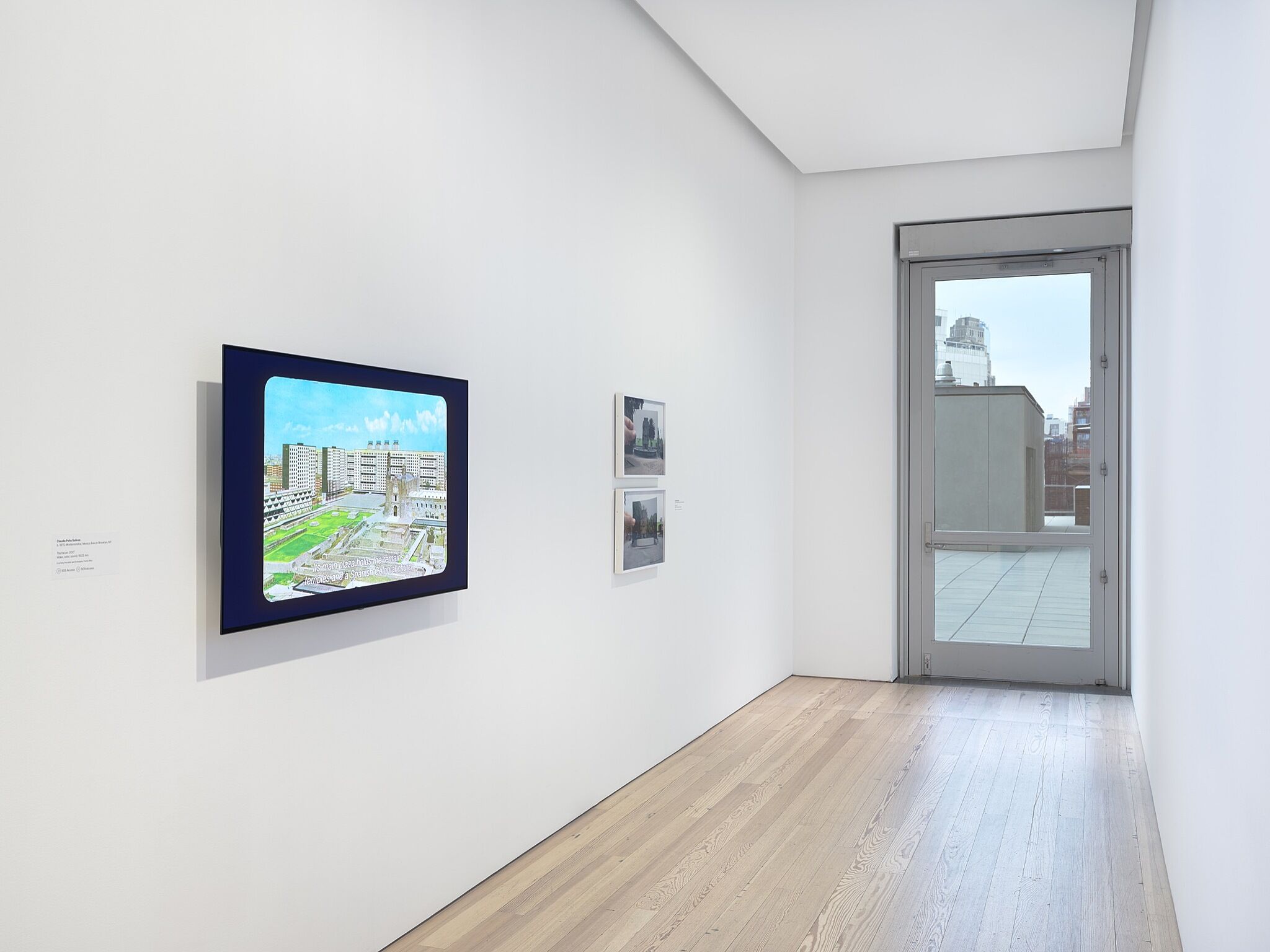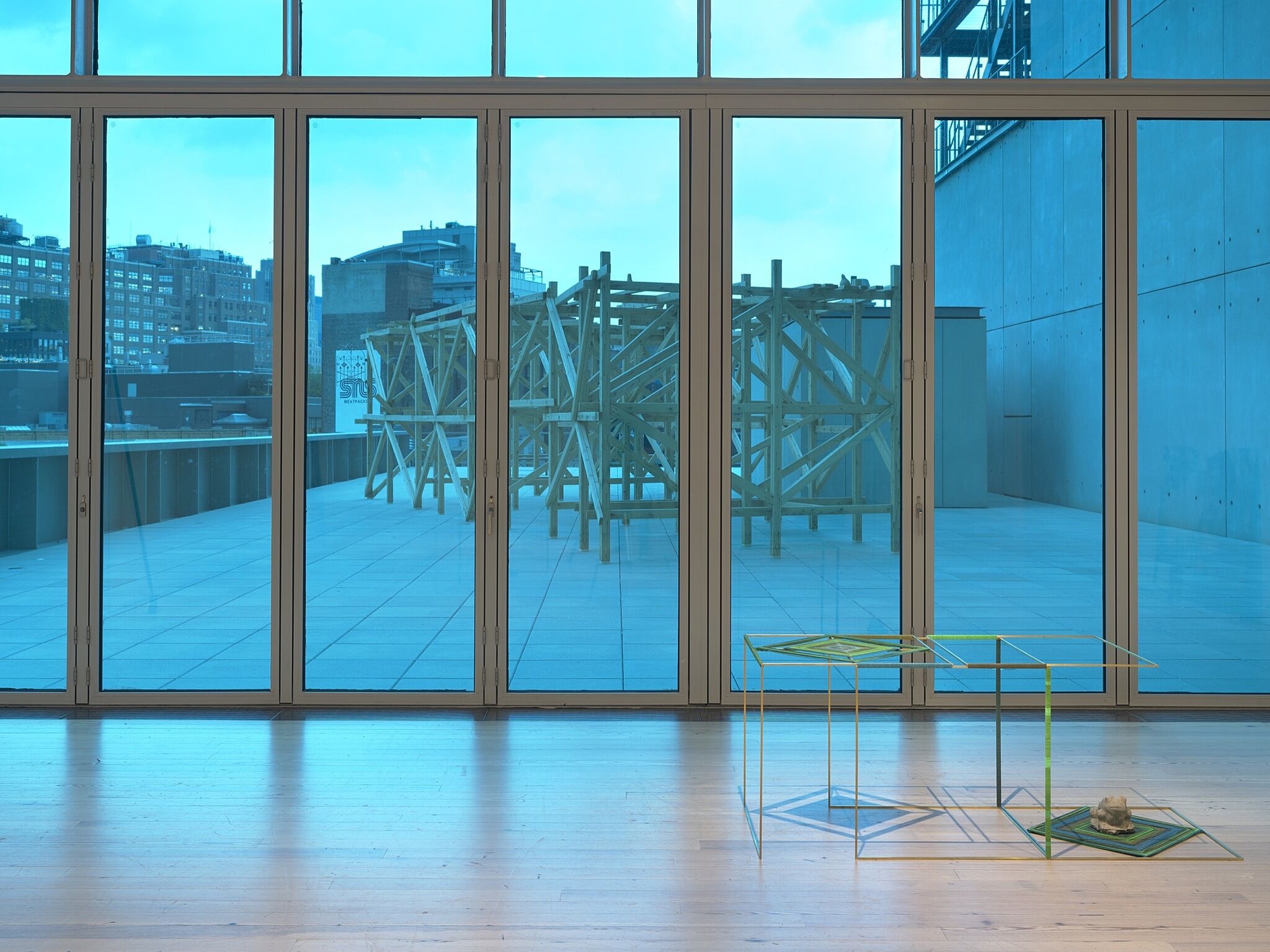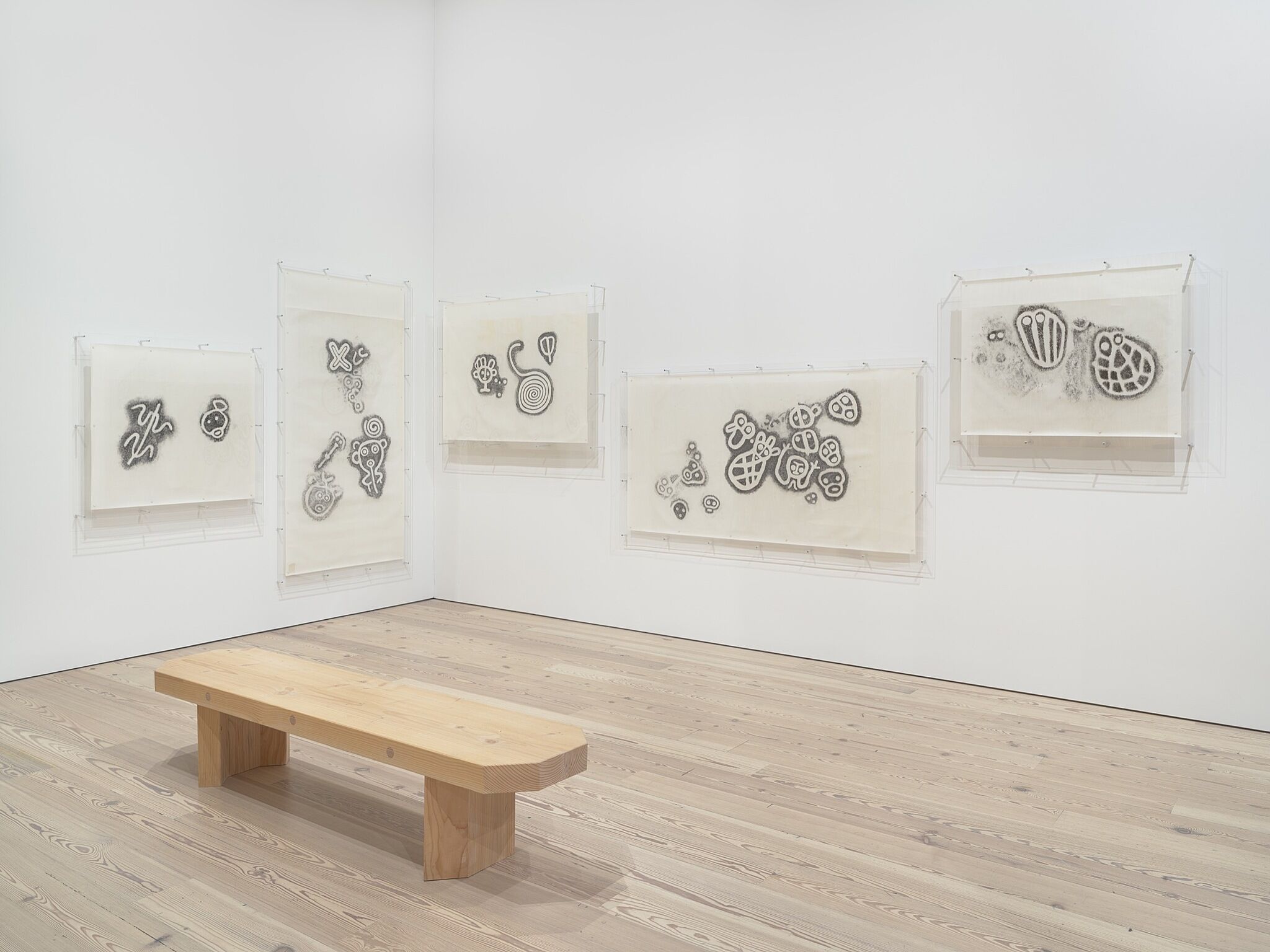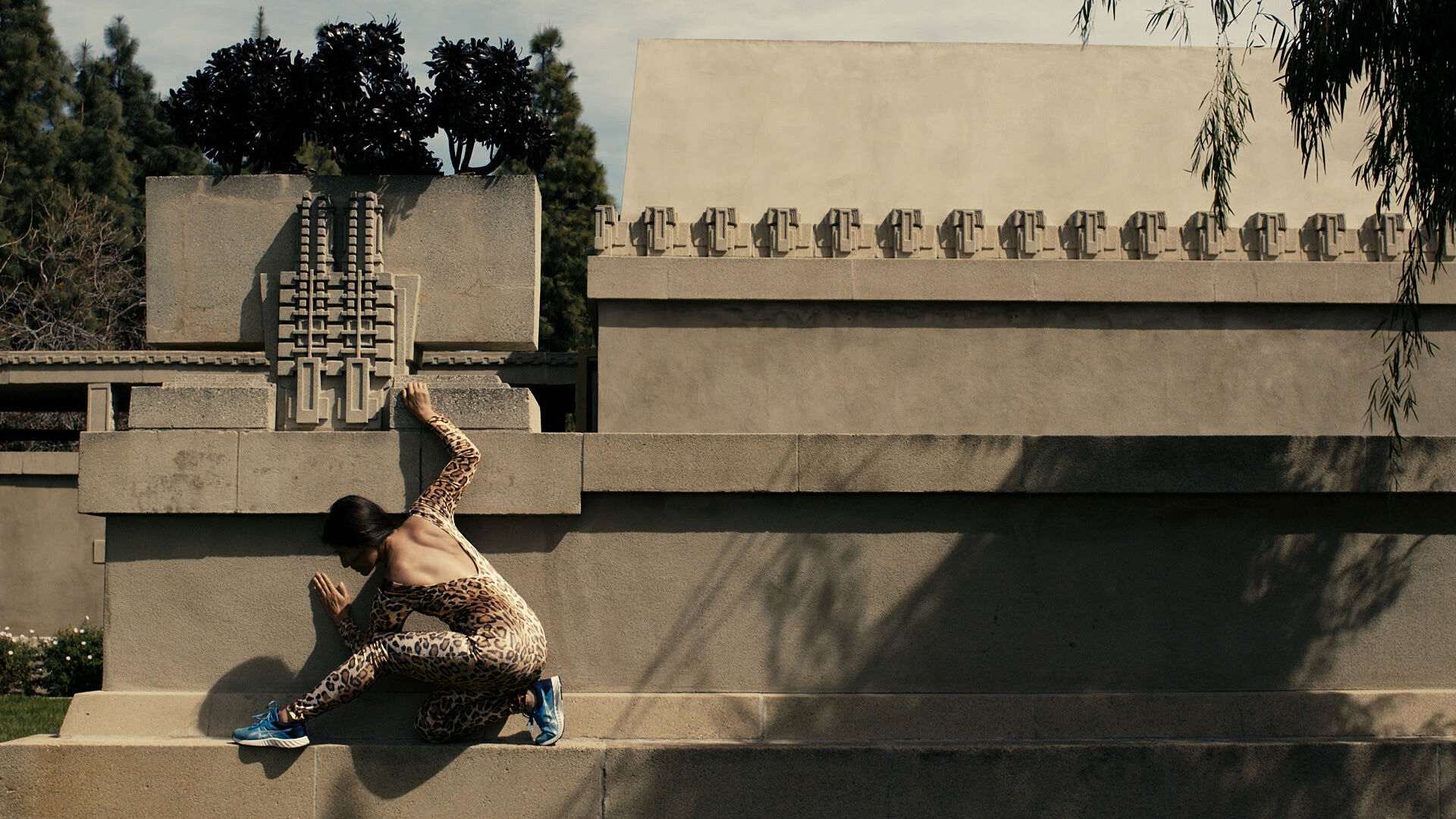Pacha, Llaqta, Wasichay: Indigenous Space, Modern Architecture, New Art
July 13–Sept 30, 2018
Pacha, Llaqta, Wasichay: Indigenous Space, Modern Architecture, New Art
Pacha, Llaqta, Wasichay: Indigenous Space, Modern Architecture, New Art investigates contemporary art practices that preserve and foreground Indigenous American notions of the built environment and natural world. The three words in the exhibition’s title are Quechua, the Indigenous language most spoken in the Americas. Each holds more than one meaning: pacha denotes universe, time, space, nature, or world; llaqta signifies place, country, community, or town; and wasichay means to build or to construct a house. Influenced by the richness of these concepts, the artworks explore the conceptual frameworks inherited from, and also still alive in, Indigenous groups in Mexico and South America that include the Quechua, Aymara, Maya, Aztec, and Taíno, among others.
The show features the work of seven emerging Latinx artists based in the United States and Puerto Rico: william cordova, Livia Corona Benjamin, Jorge González, Guadalupe Maravilla, Claudia Peña Salinas, Ronny Quevedo, and Clarissa Tossin. Their works investigate the complex relationship that indigenous and vernacular notions of construction, land, space, and cosmology have had in the history of modern and contemporary art and architecture in the Americas.
This exhibition is organized by Marcela Guerrero, assistant curator, with Alana Hernandez, curatorial project assistant.
Pacha, Llaqta, Wasichay: Indigenous Space, Modern Architecture, New Art is part of the Whitney’s emerging artists program, sponsored by

Significant support for this exhibition is also provided by public funds from the New York City Department of Cultural Affairs in partnership with the City Council and by the Whitney’s National Committee.
Additional support is provided by AMEXCID with the Mexican Cultural Institute of New York, the Garcia Family Foundation, and an anonymous donor.
Curatorial research and travel were funded by the Steven & Alexandra Cohen Foundation.

Installation photography
-
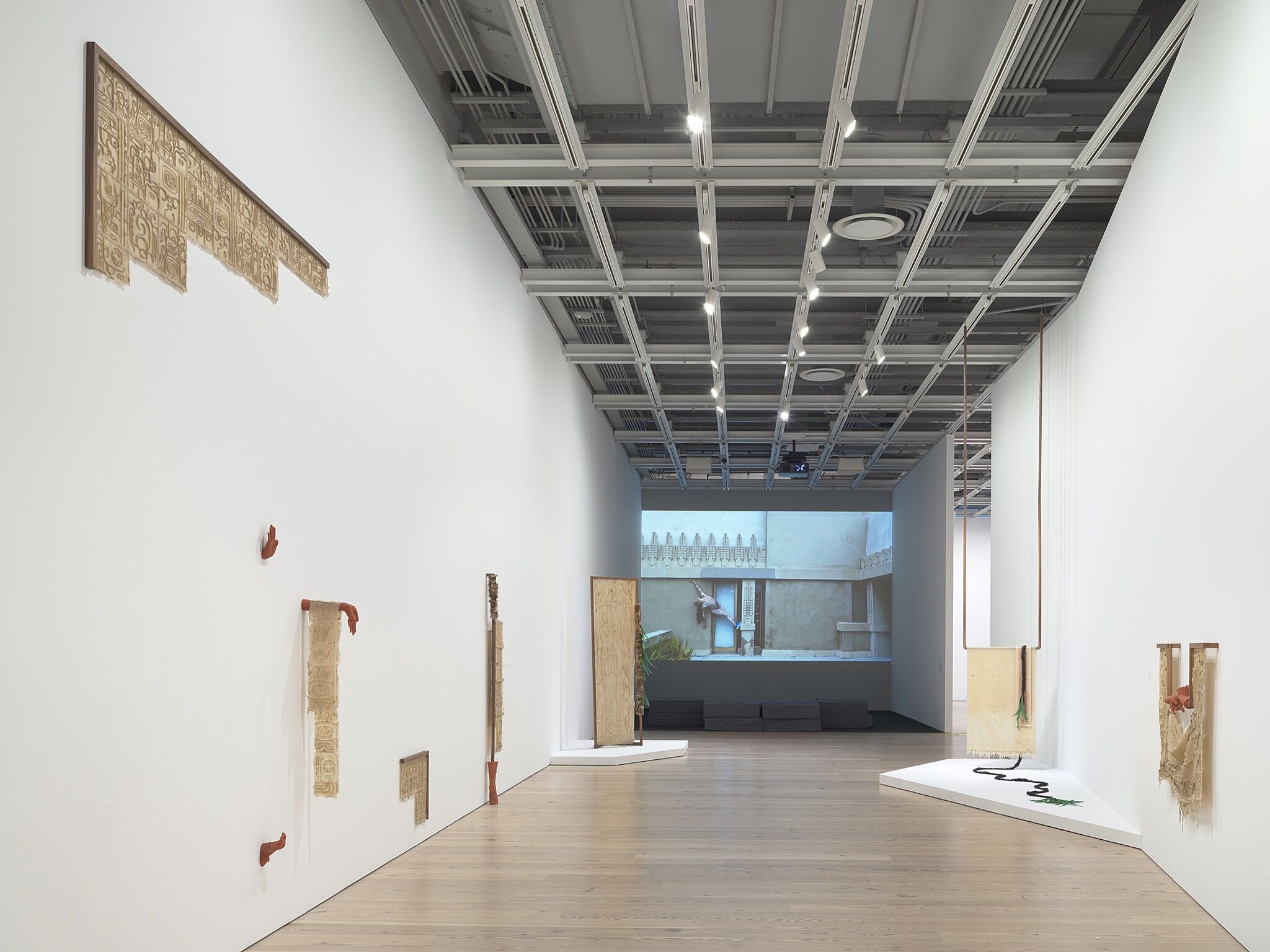

Installation view of Pacha, Llaqta, Wasichay: Indigenous Space, Modern Architecture, New Art (Whitney Museum of American Art, New York, July 13–September 30, 2018). From left to right: Clarissa Tossin, A cycle of time we don’t understand (reversed, invented, and rearranged), 2017; Clarissa Tossin, xojowisaj ja (to make the building dance), 2017; Clarissa Tossin, Ha’ K’in Xook, from Piedras Negras to Hill Street, 2017; Clarissa Tossin, Ch’u Mayaa, 2017; Clarissa Tossin, Yaxchilán Lintel 25 (feathered serpent), 2017; Clarissa Tossin, A two-headed serpent held in the arms of human beings, or, Ticket Window, 2017. Photograph by Ron Amstutz
-
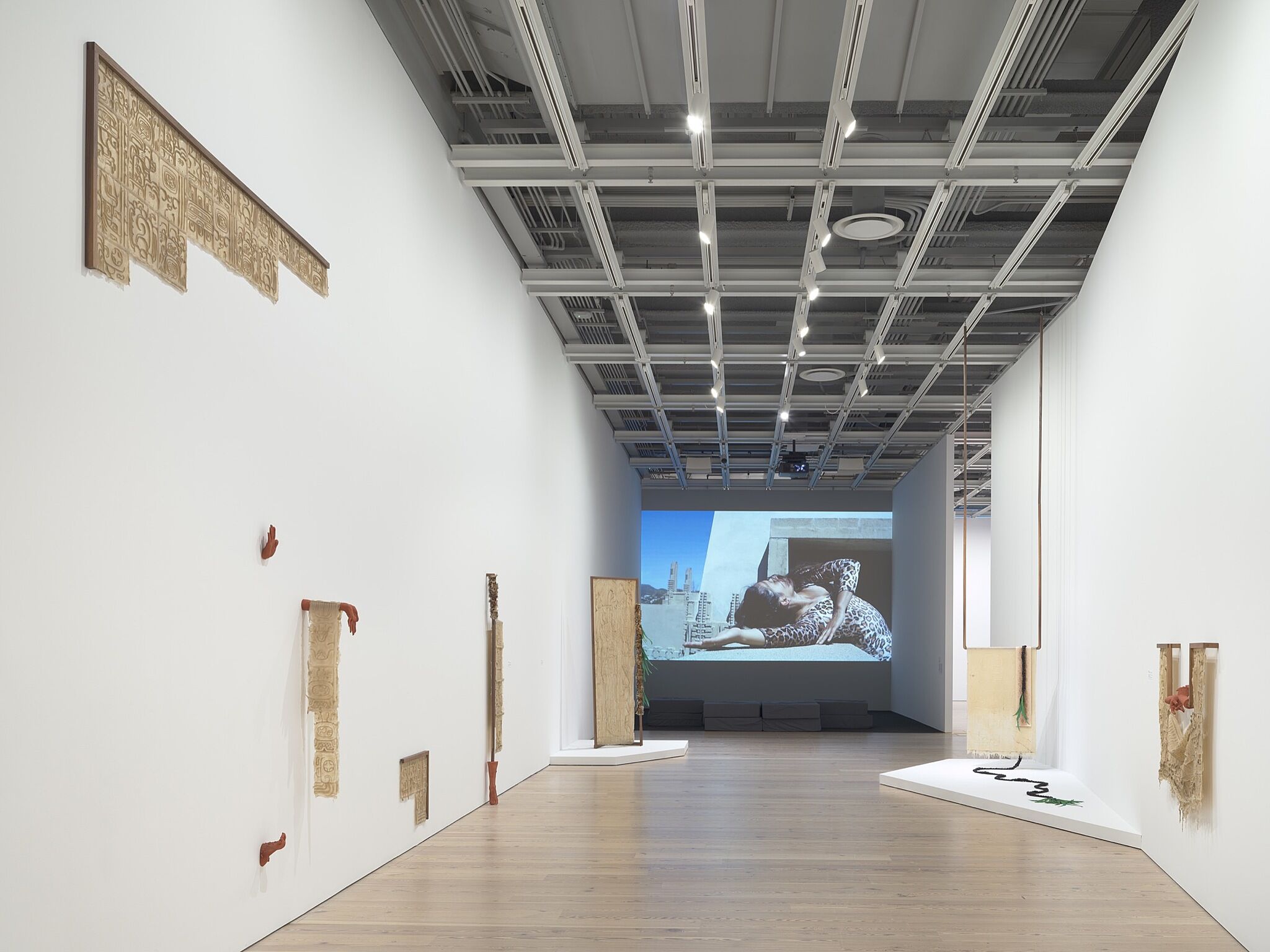

Installation view of Pacha, Llaqta, Wasichay: Indigenous Space, Modern Architecture, New Art (Whitney Museum of American Art, New York, July 13–September 30, 2018). From left to right: Clarissa Tossin, A cycle of time we don’t understand (reversed, invented, and rearranged), 2017; Clarissa Tossin, xojowisaj ja (to make the building dance), 2017; Clarissa Tossin, Ha’ K’in Xook, from Piedras Negras to Hill Street, 2017; Clarissa Tossin, Ch’u Mayaa, 2017; Clarissa Tossin, Yaxchilán Lintel 25 (feathered serpent), 2017; Clarissa Tossin, A two-headed serpent held in the arms of human beings, or, Ticket Window, 2017. Photograph by Ron Amstutz
-
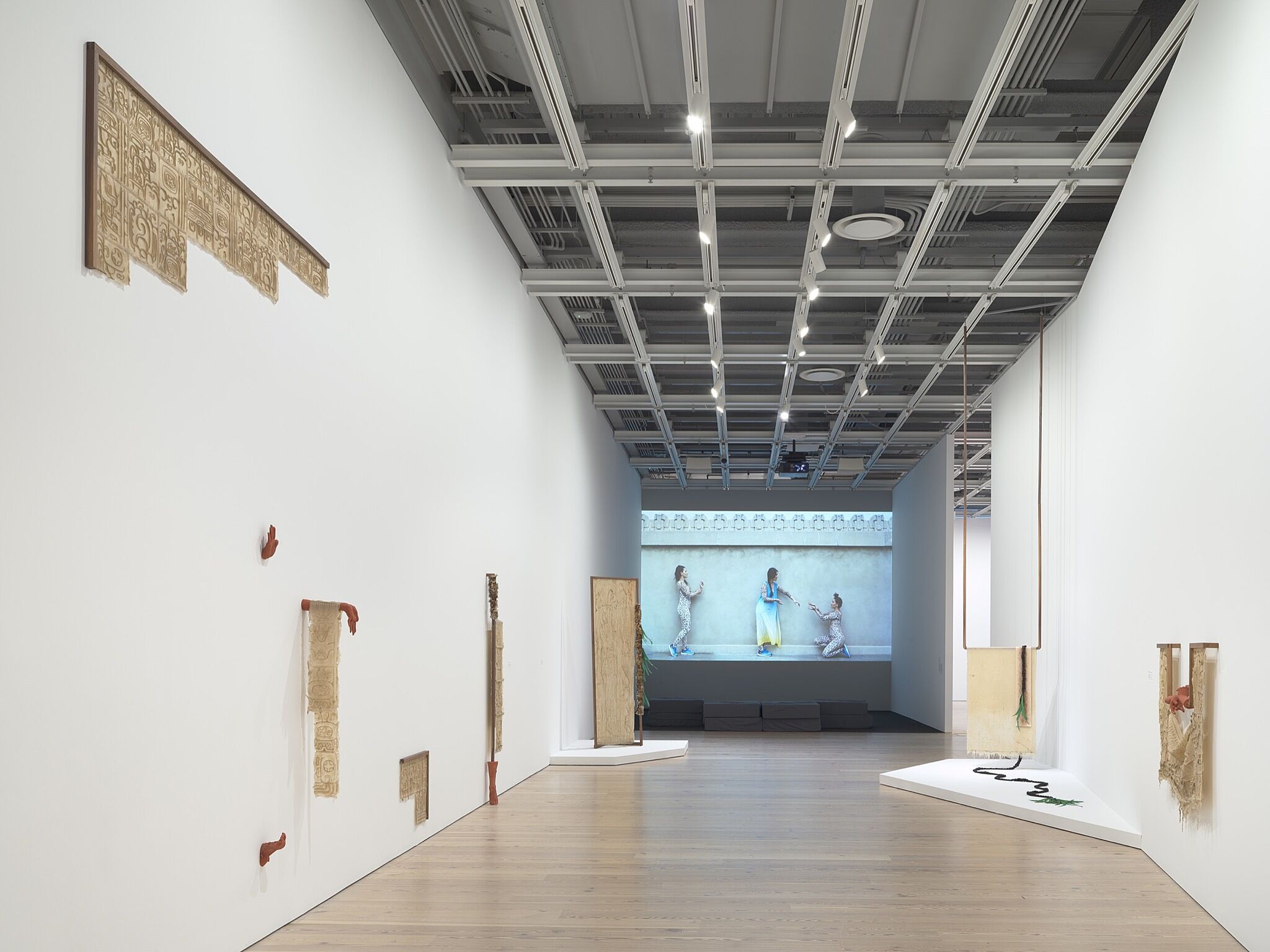

Installation view of Pacha, Llaqta, Wasichay: Indigenous Space, Modern Architecture, New Art (Whitney Museum of American Art, New York, July 13–September 30, 2018). From left to right: Clarissa Tossin, A cycle of time we don’t understand (reversed, invented, and rearranged), 2017; Clarissa Tossin, xojowisaj ja (to make the building dance), 2017; Clarissa Tossin, Ha’ K’in Xook, from Piedras Negras to Hill Street, 2017; Clarissa Tossin, Ch’u Mayaa, 2017; Clarissa Tossin, Yaxchilán Lintel 25 (feathered serpent), 2017; Clarissa Tossin, A two-headed serpent held in the arms of human beings, or, Ticket Window, 2017. Photograph by Ron Amstutz
-
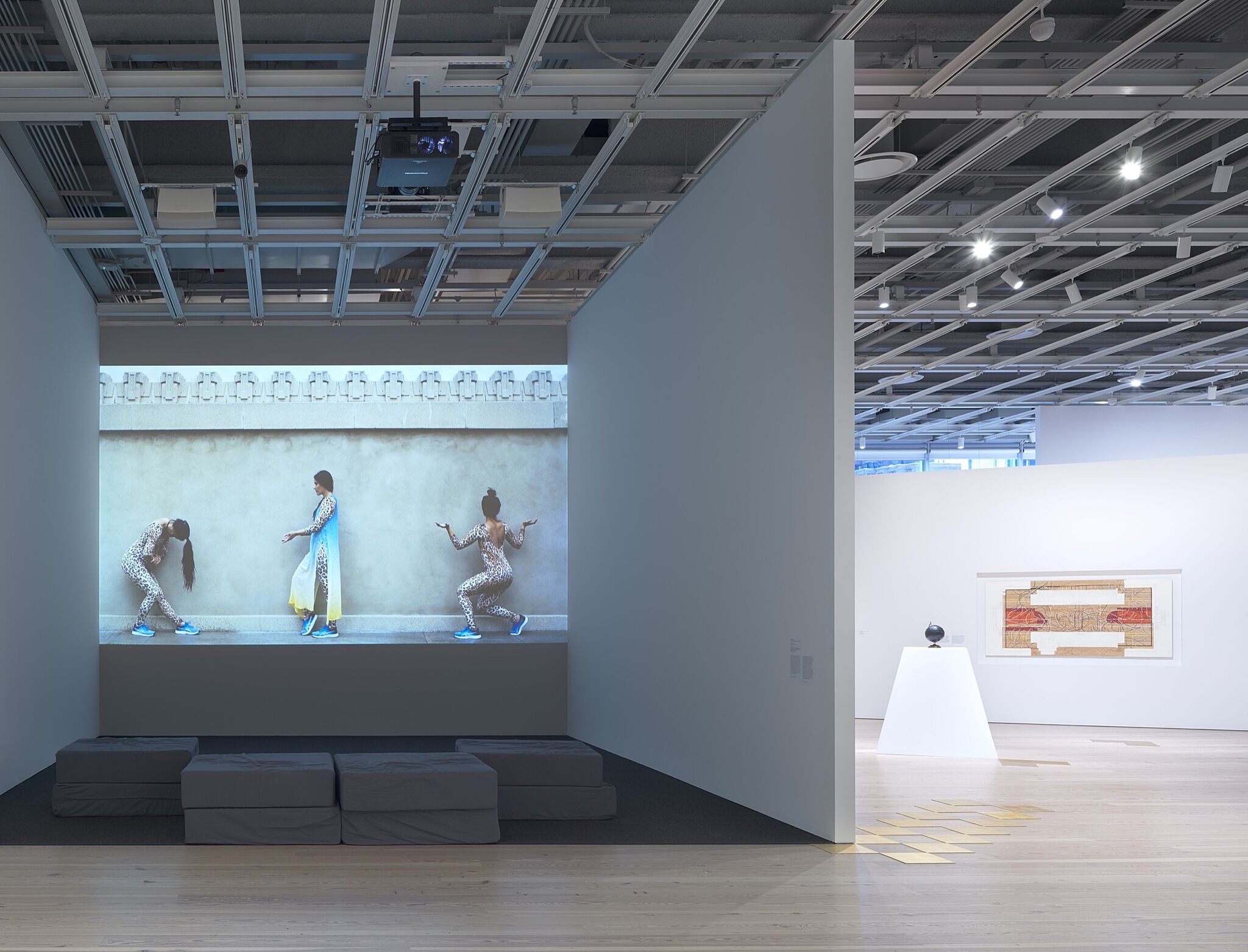

Installation view of Pacha, Llaqta, Wasichay: Indigenous Space, Modern Architecture, New Art (Whitney Museum of American Art, New York, July 13–September 30, 2018). From left to right: Clarissa Tossin, Ch’u Mayaa, 2017; Ronny Quevedo, Errant Globe, 2015; Ronny Quevedo, ULAMA-ULE-ALLEY OOP, 2017. Photograph by Ron Amstutz
-
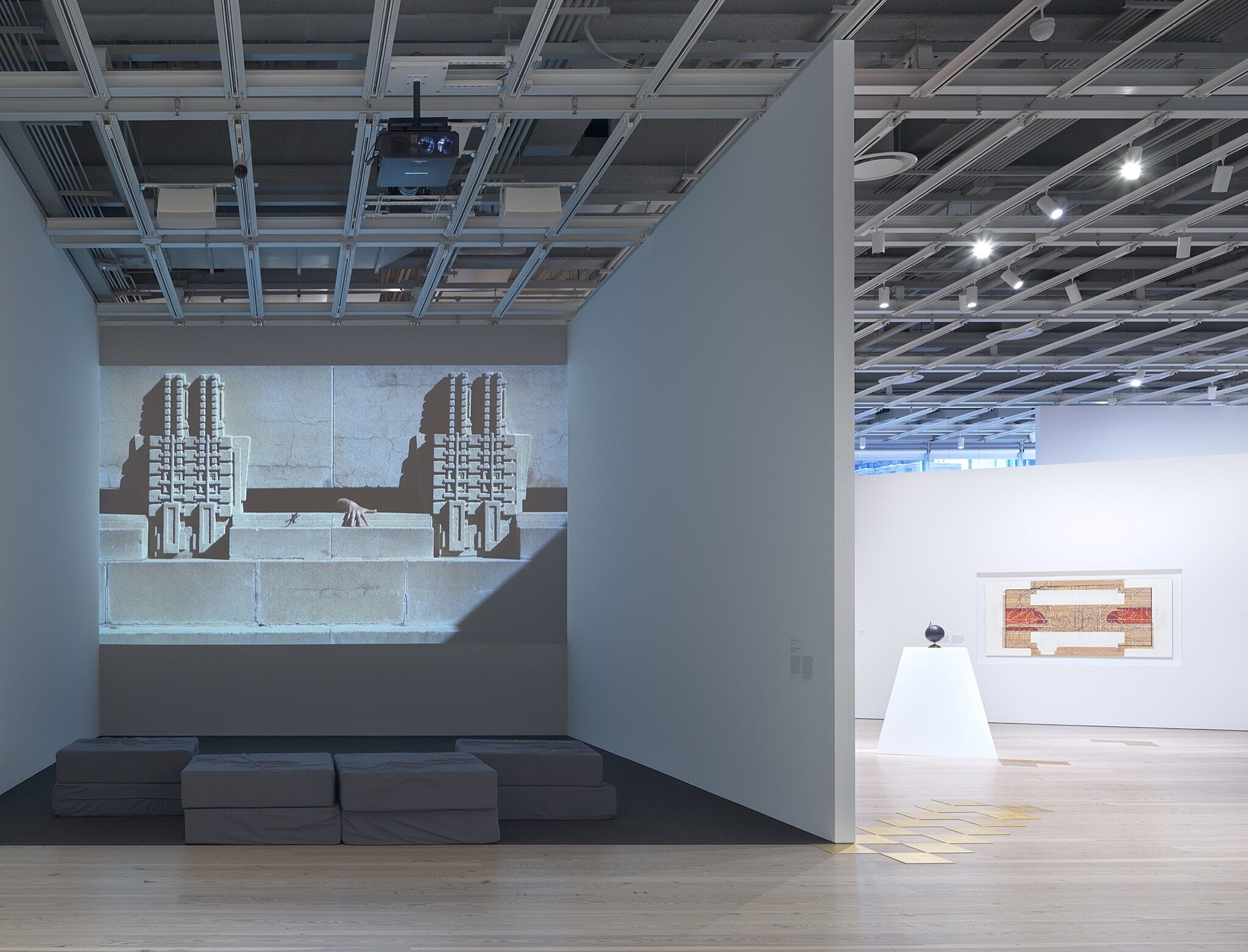

Installation view of Pacha, Llaqta, Wasichay: Indigenous Space, Modern Architecture, New Art(Whitney Museum of American Art, New York, July 13–September 30, 2018). From left to right: Clarissa Tossin, Ch’u Mayaa, 2017; Ronny Quevedo, Errant Globe, 2015; Ronny Quevedo, ULAMA-ULE-ALLEY OOP, 2017. Photograph by Ron Amstutz
-
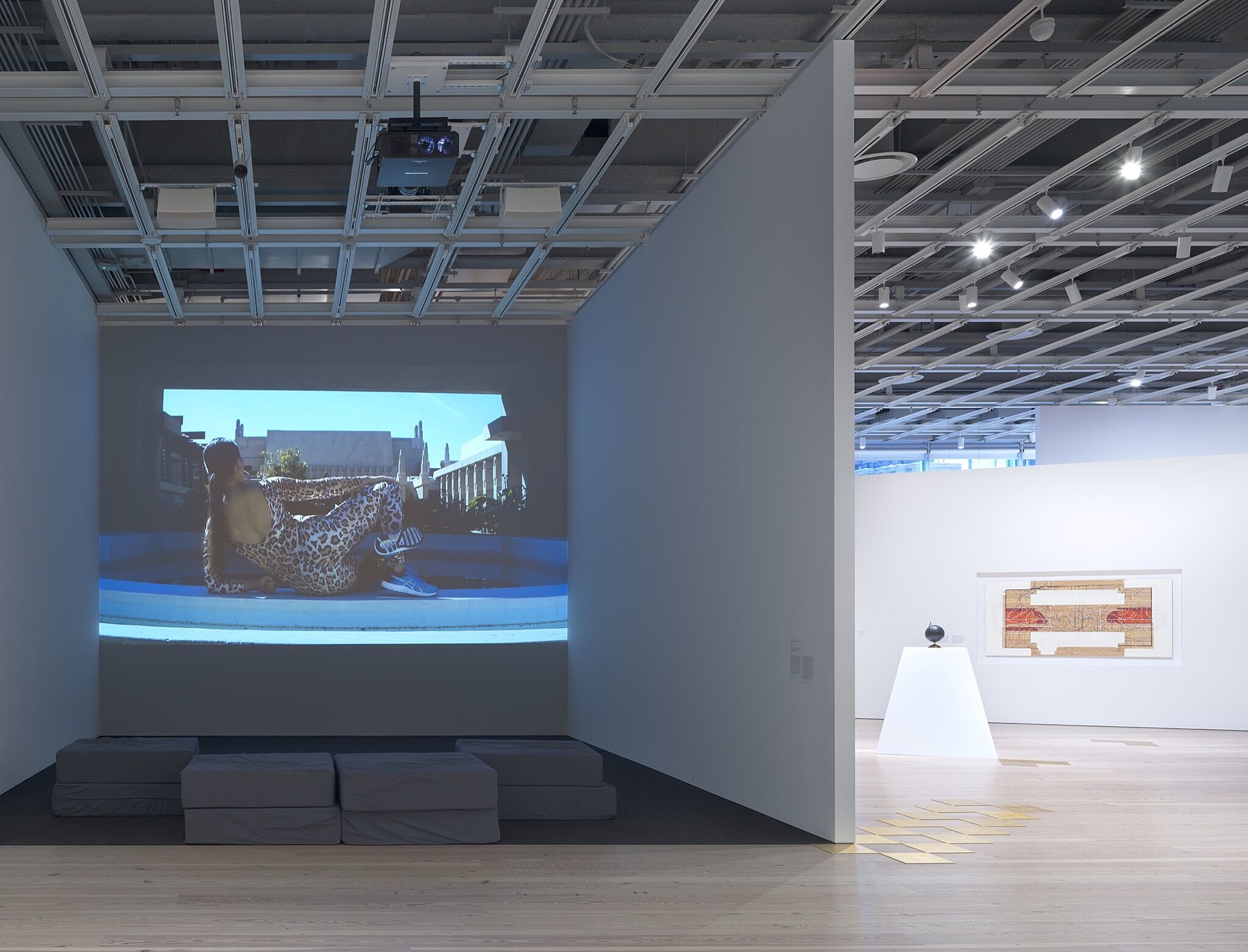

Installation view of Pacha, Llaqta, Wasichay: Indigenous Space, Modern Architecture, New Art(Whitney Museum of American Art, New York, July 13–September 30, 2018). From left to right: Clarissa Tossin, Ch’u Mayaa, 2017; Ronny Quevedo, Errant Globe, 2015; Ronny Quevedo, ULAMA-ULE-ALLEY OOP, 2017. Photograph by Ron Amstutz
-
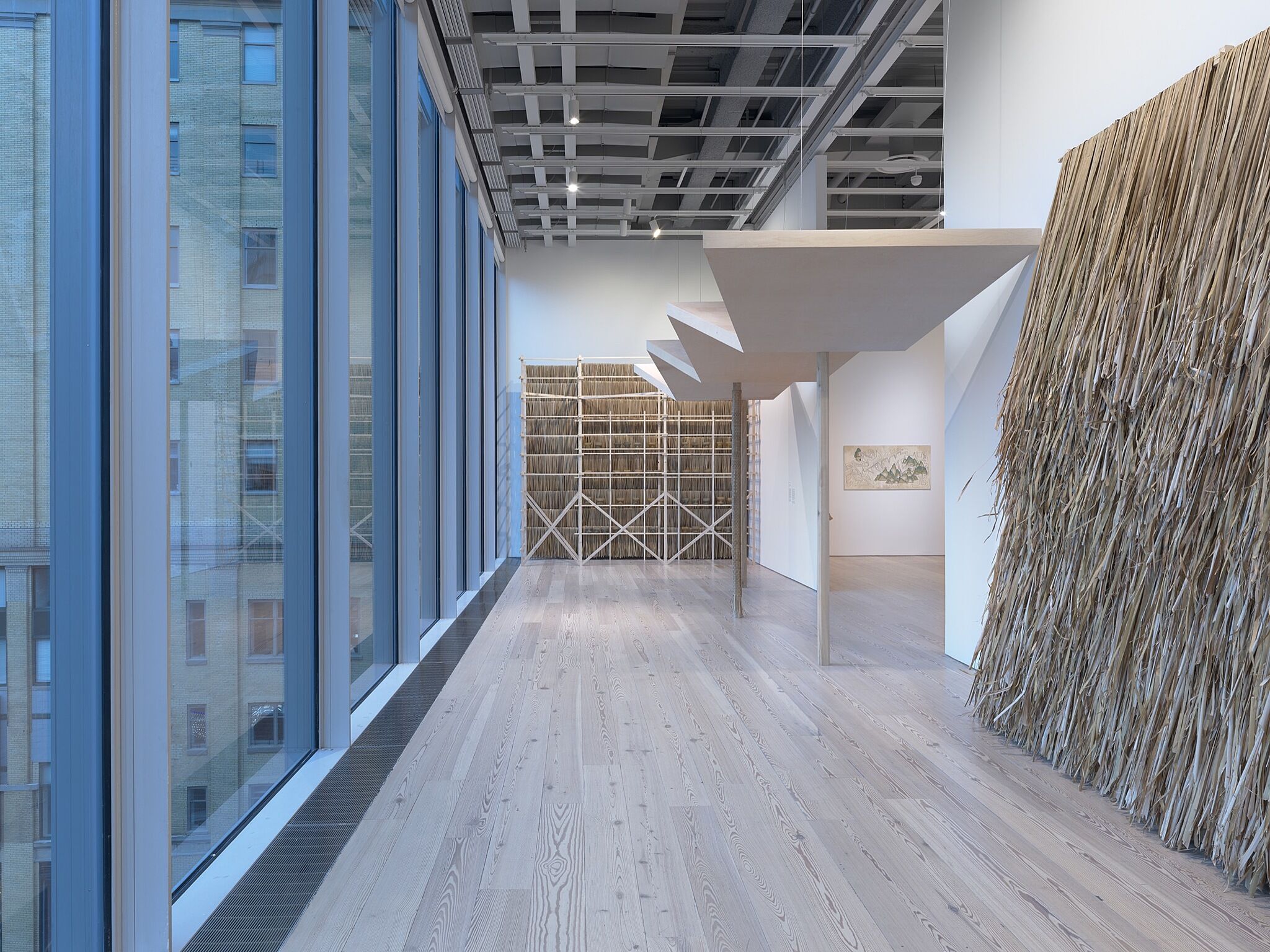

Installation view of Pacha, Llaqta, Wasichay: Indigenous Space, Modern Architecture, New Art (Whitney Museum of American Art, New York, July 13–September 30, 2018). From left to right: Jorge González, Ayacavo Guarocoel, 2018; Guadalupe Maravilla, Requiem for my border crossing (Collaborative drawing between the undocumented) #11, 2018. Photograph by Ron Amstutz
-
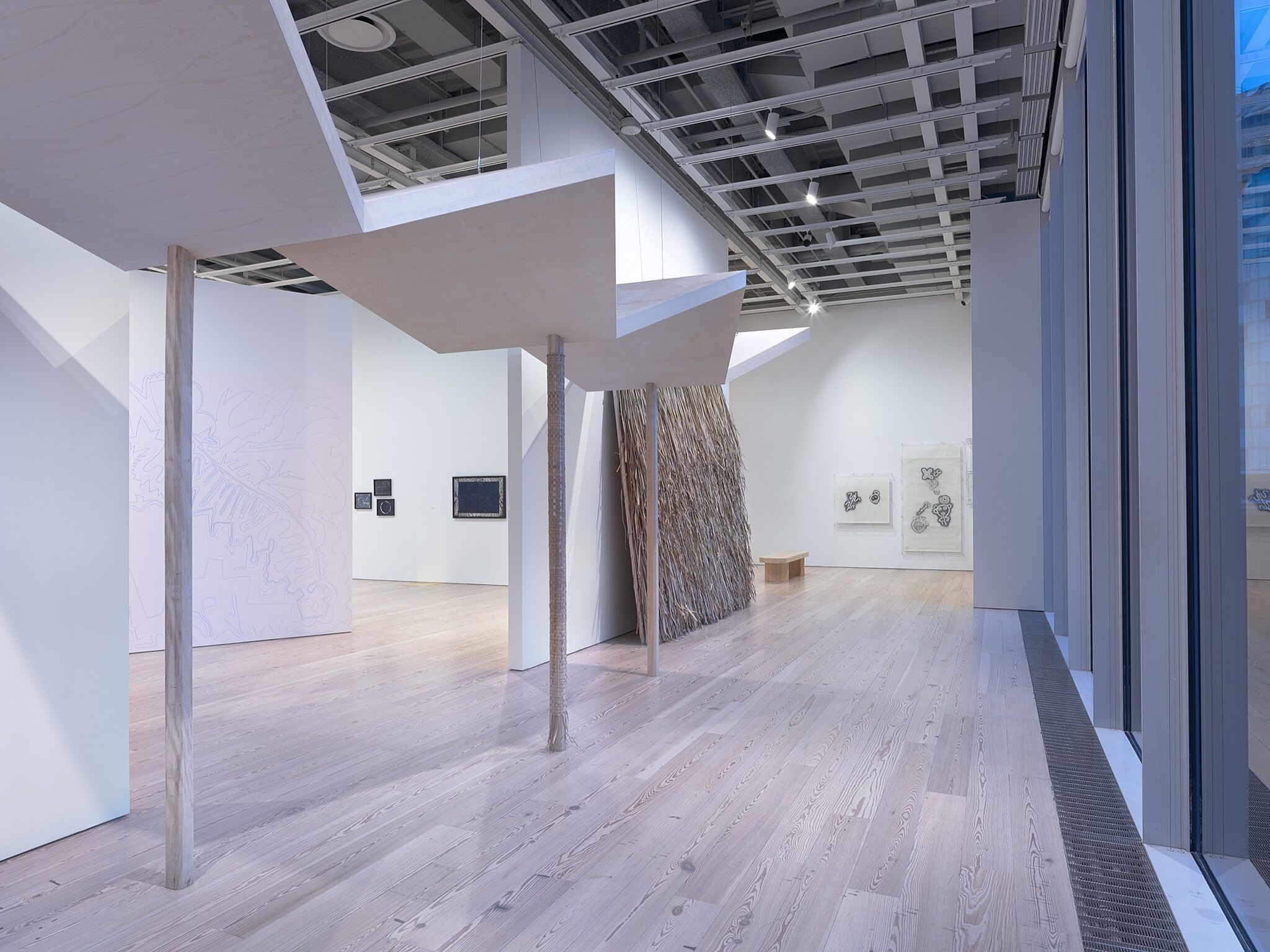

Installation view of Pacha, Llaqta, Wasichay: Indigenous Space, Modern Architecture, New Art (Whitney Museum of American Art, New York, July 13–September 30, 2018). From left to right: Guadalupe Maravilla, Tripa Chuca, 2018; Ronny Quevedo, every measure of zero (Nazca beyond the plain), 2017; Ronny Quevedo, every measure of zero (errantry), 2017; Ronny Quevedo, every measure of zero (periphery), 2017; Ronny Quevedo, (lyra), 2017; Jorge González, Ayacavo Guarocoel, 2018; Monica Flaherty, Petroglyph studies at Coabey River, Jayuya, Puerto Rico, c. 1957. Photograph by Ron Amstutz
-
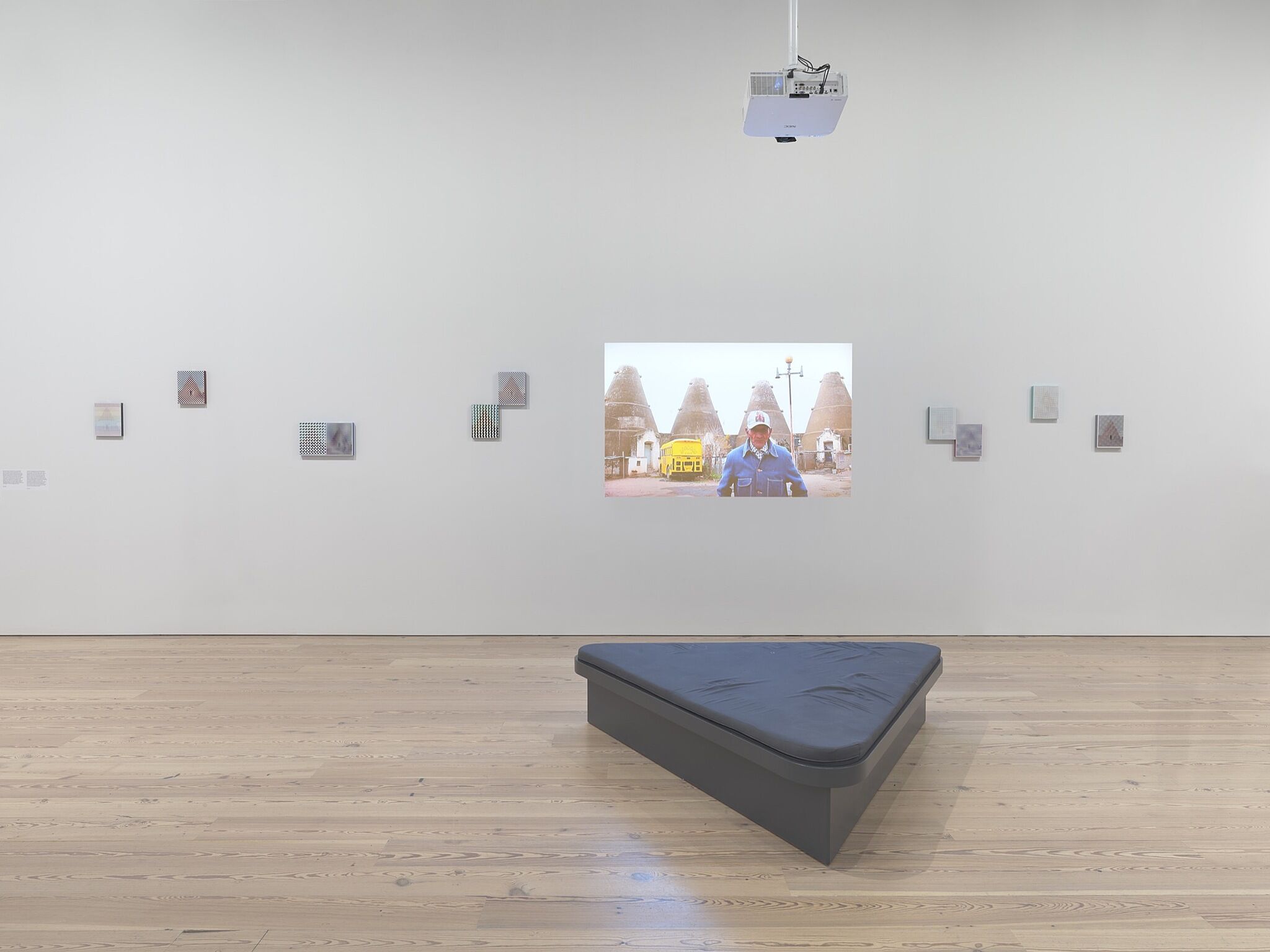

Installation view of Pacha, Llaqta, Wasichay: Indigenous Space, Modern Architecture, New Art (Whitney Museum of American Art, New York, July 13–September 30, 2018). From left to right: Livia Corona Benjamín, Infinite Rewrite VI, 2016; Livia Corona Benjamín, Infinite Rewrite LIII, 2018; Livia Corona Benjamín, Infinite Rewrite LVI, 2018; Livia Corona Benjamín, Infinite Rewrite LII, 2018; Livia Corona Benjamín, Infinite Rewrite L, 2018; Livia Corona Benjamín, Infinite Rewrite XXXI, 2016; Livia Corona Benjamín, Graneros del Pueblo / Nadie Sabe, Nadie Supo, 2016; Livia Corona Benjamín, Infinite Rewrite LV, 2018; Livia Corona Benjamín, Infinite Rewrite LIV, 2018; Livia Corona Benjamín, Infinite Rewrite LI, 2018; Livia Corona Benjamín, Infinite Rewrite XVIII, 2016. Photograph by Ron Amstutz
-
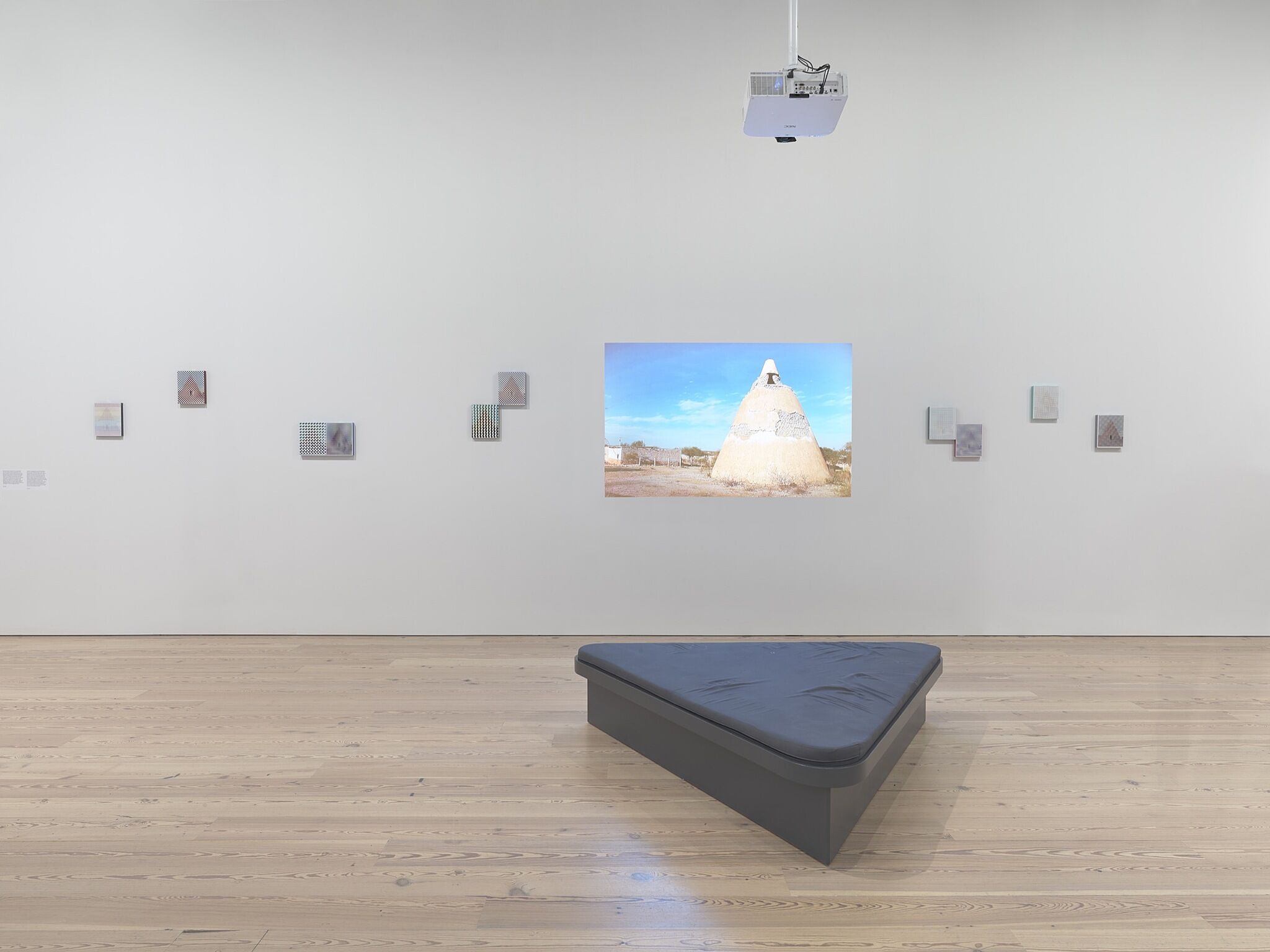

Installation view of Pacha, Llaqta, Wasichay: Indigenous Space, Modern Architecture, New Art (Whitney Museum of American Art, New York, July 13–September 30, 2018). From left to right: Livia Corona Benjamín, Infinite Rewrite VI, 2016; Livia Corona Benjamín, Infinite Rewrite LIII, 2018; Livia Corona Benjamín, Infinite Rewrite LVI, 2018; Livia Corona Benjamín, Infinite Rewrite LII, 2018; Livia Corona Benjamín, Infinite Rewrite L, 2018; Livia Corona Benjamín, Infinite Rewrite XXXI, 2016; Livia Corona Benjamín, Graneros del Pueblo / Nadie Sabe, Nadie Supo, 2016; Livia Corona Benjamín, Infinite Rewrite LV, 2018; Livia Corona Benjamín, Infinite Rewrite LIV, 2018; Livia Corona Benjamín, Infinite Rewrite LI, 2018; Livia Corona Benjamín, Infinite Rewrite XVIII, 2016. Photograph by Ron Amstutz
-
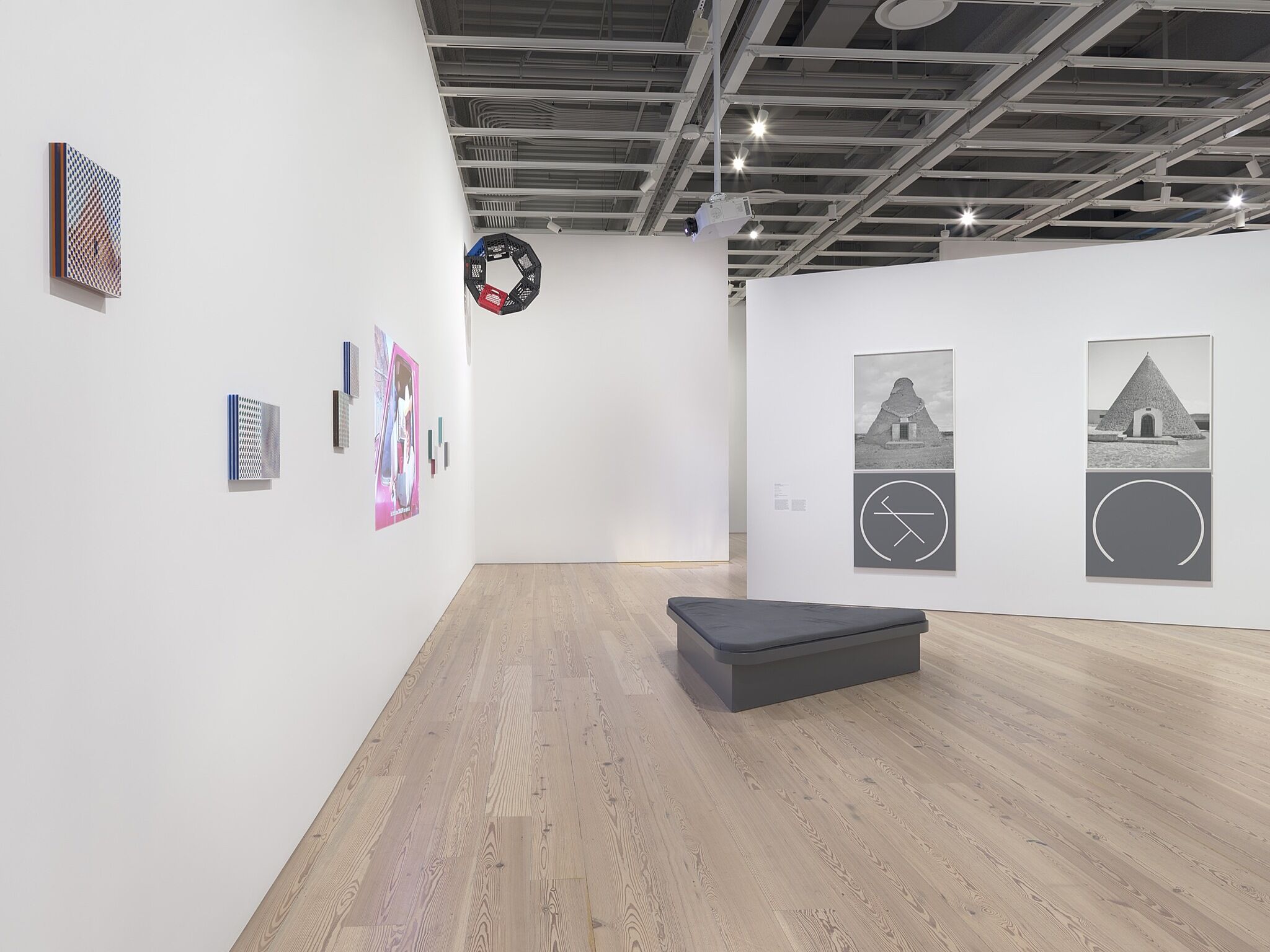

Installation view of Pacha, Llaqta, Wasichay: Indigenous Space, Modern Architecture, New Art (Whitney Museum of American Art, New York, July 13–September 30, 2018). From left to right: Livia Corona Benjamín, Infinite Rewrite VI, 2016; Livia Corona Benjamín, Infinite Rewrite LIII, 2018; Livia Corona Benjamín, Infinite Rewrite LVI, 2018; Livia Corona Benjamín, Infinite Rewrite LII, 2018; Livia Corona Benjamín, Infinite Rewrite L, 2018; Livia Corona Benjamín, Infinite Rewrite XXXI, 2016; Livia Corona Benjamín, Graneros del Pueblo / Nadie Sabe, Nadie Supo, 2016; Livia Corona Benjamín, Infinite Rewrite LV, 2018; Livia Corona Benjamín, Infinite Rewrite LIV, 2018; Livia Corona Benjamín, Infinite Rewrite LI, 2018; Livia Corona Benjamín, Infinite Rewrite XVIII, 2016; Ronny Quevedo, Ulama, Ule, Olé, 2012; Livia Corona Benjamín, Zoquitl / Conversion C, 2018; Livia Corona Benjamín, Huapalcalco / Conversion A, 2018. Photograph by Ron Amstutz
-
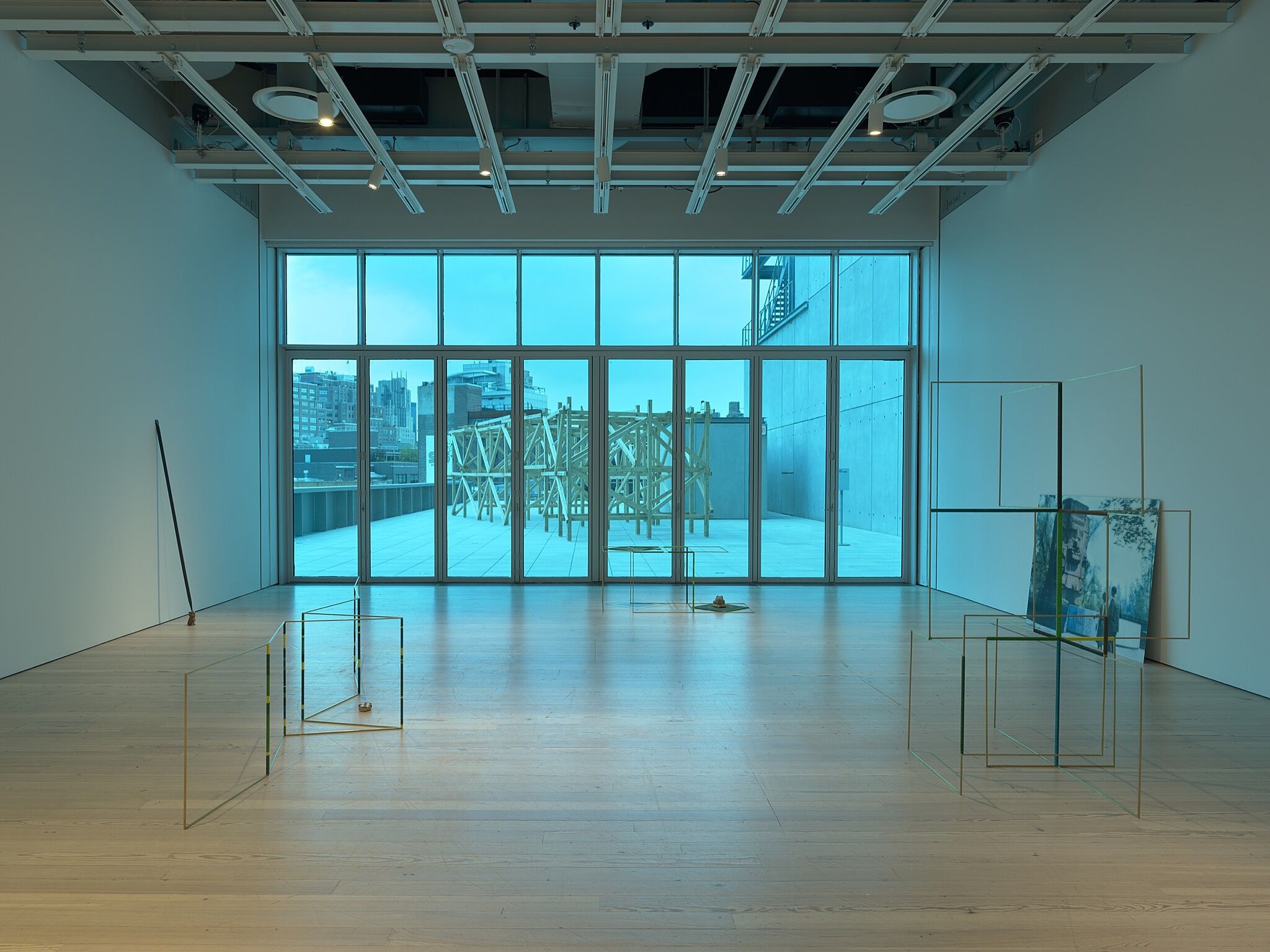

Installation view of Pacha, Llaqta, Wasichay: Indigenous Space, Modern Architecture, New Art (Whitney Museum of American Art, New York, July 13–September 30, 2018). From left to right: Claudia Peña Salinas, Cuecan, 2017; Claudia Peña Salinas, Untitled (owl), 2015; Claudia Peña Salinas, Cueyatl, 2017; Claudia Peña Salinas, Tlalicue, 2017; Claudia Peña Salinas, Tlaloc MNA, 2018. In back: william cordova, huaca (sacred geometries), 2018. Photograph by Ron Amstutz
-
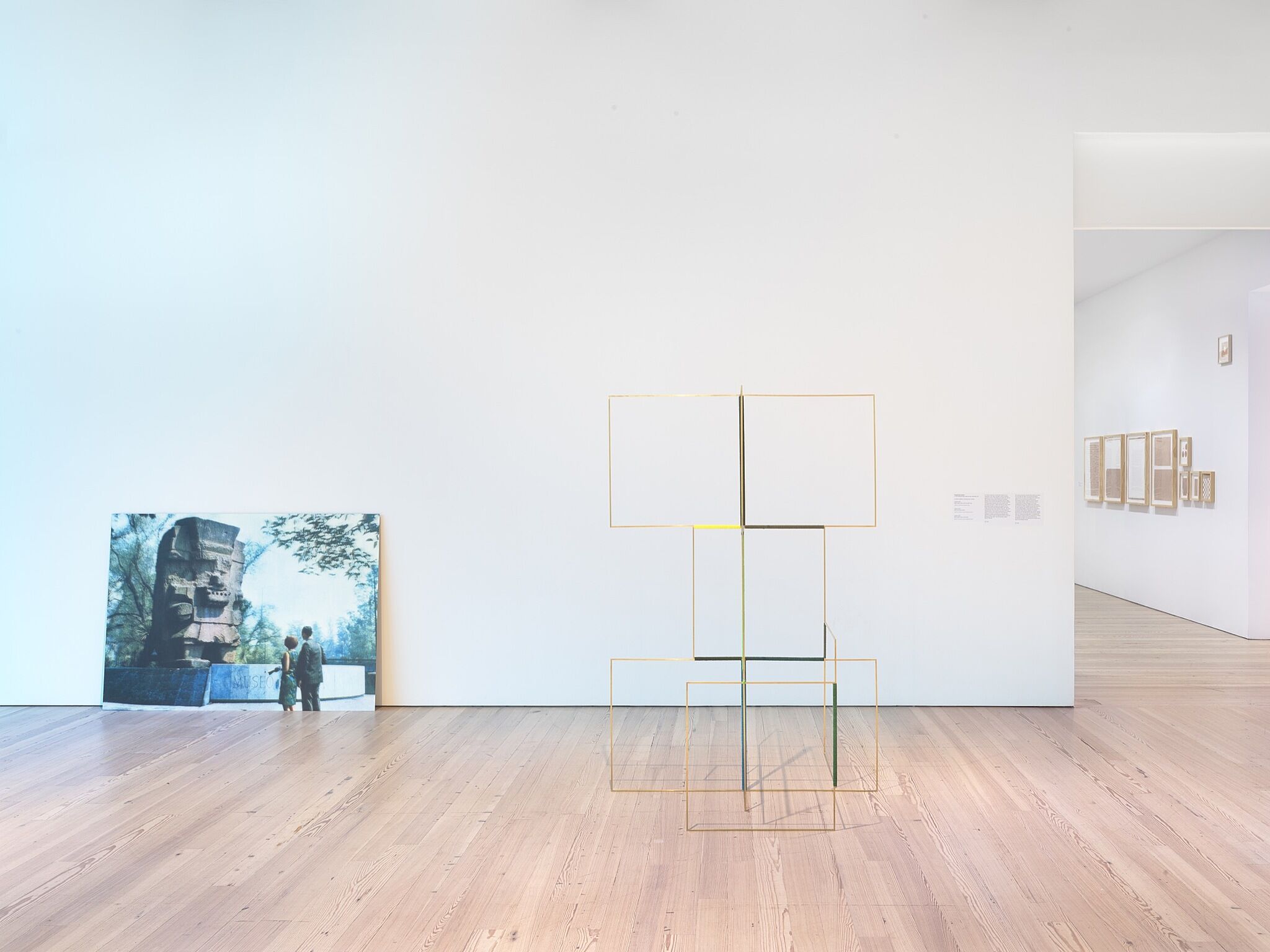

Installation view of Pacha, Llaqta, Wasichay: Indigenous Space, Modern Architecture, New Art (Whitney Museum of American Art, New York, July 13–September 30, 2018). From left to right: Claudia Peña Salinas, Tlaloc MNA, 2018; Claudia Peña Salinas, Tlalicue, 2017; william cordova, untitled, 2015–16; william cordova, untitled, 2016; william cordova, untitled, 2016; william cordova, untitled, 2015; william cordova, untitled, 2016; william cordova, untitled, 2016; william cordova, untitled, 2016; william cordova, untitled, 2016. Photograph by Ron Amstutz
-
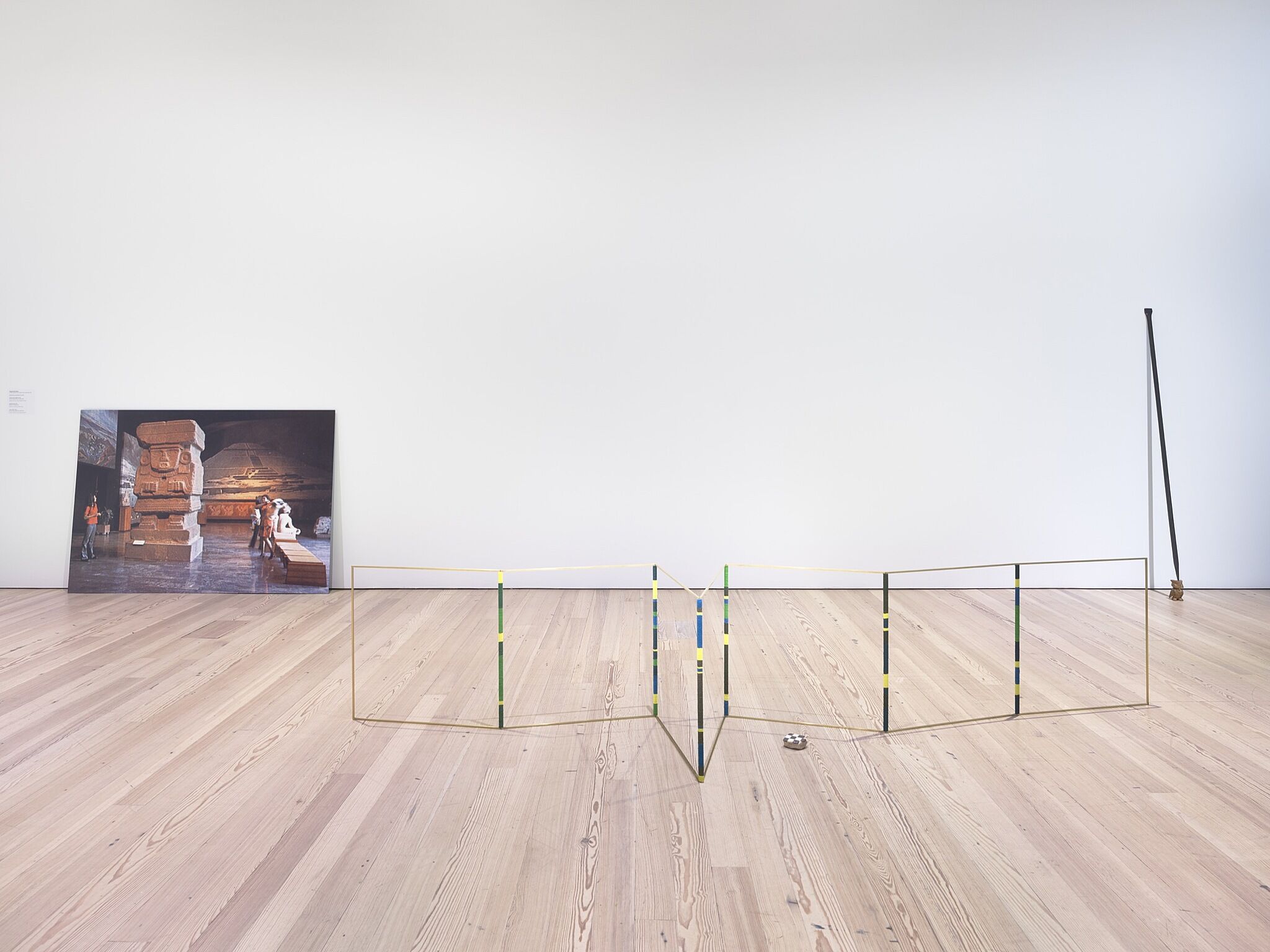

Installation view of Pacha, Llaqta, Wasichay: Indigenous Space, Modern Architecture, New Art (Whitney Museum of American Art, New York, July 13–September 30, 2018). From left to right: Claudia Peña Salinas, Chalchiuhtlicue MNA, 2018; Claudia Peña Salinas, Cuecan, 2017; Claudia Peña Salinas, Untitled (owl), 2015. Photograph by Ron Amstutz
-
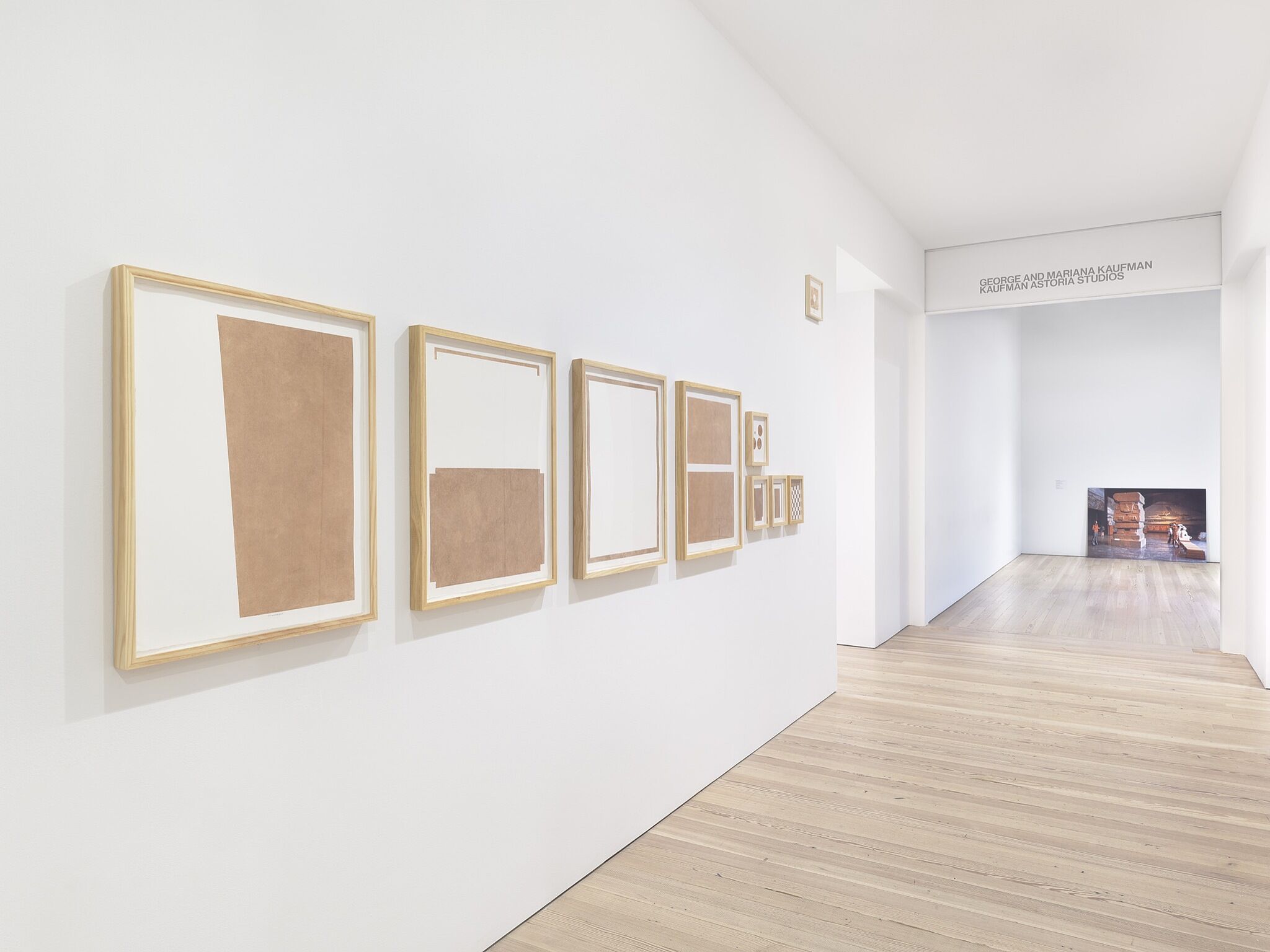

Installation view of Pacha, Llaqta, Wasichay: Indigenous Space, Modern Architecture, New Art (Whitney Museum of American Art, New York, July 13–September 30, 2018). From left to right: william cordova, untitled, 2015–16; william cordova, untitled, 2016; william cordova, untitled, 2016; william cordova, untitled, 2015; william cordova, untitled, 2016; william cordova, untitled, 2016; william cordova, untitled, 2016; william cordova, untitled, 2016; Claudia Peña Salinas, Chalchiuhtlicue MNA, 2018. Photograph by Ron Amstutz
-
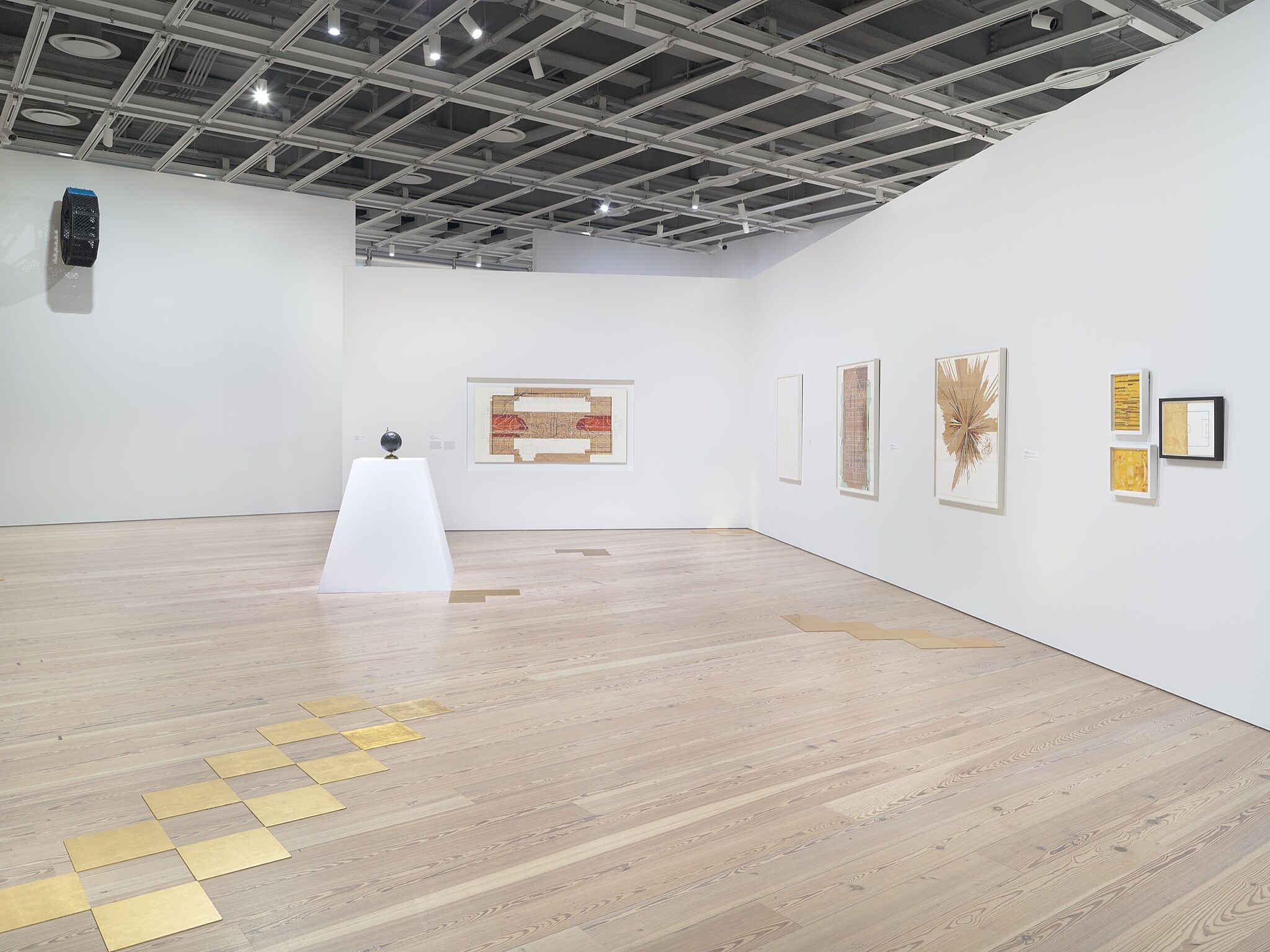

Installation view of Pacha, Llaqta, Wasichay: Indigenous Space, Modern Architecture, New Art (Whitney Museum of American Art, New York, July 13–September 30, 2018). From left to right: Ronny Quevedo, Ulama, Ule, Olé, 2012; Ronny Quevedo, Errant Globe, 2015; Ronny Quevedo, ULAMA-ULE-ALLEY OOP, 2017; Ronny Quevedo, Field of Play, 2016; Ronny Quevedo, Cabeza Magica, 2012; Ronny Quevedo, quipu, 2017; Ronny Quevedo, every measure of zero (wari textile), 2017; Ronny Quevedo, every measure of zero (up is down), 2017; Ronny Quevedo, oro blanco, 2017. Photograph by Ron Amstutz
-
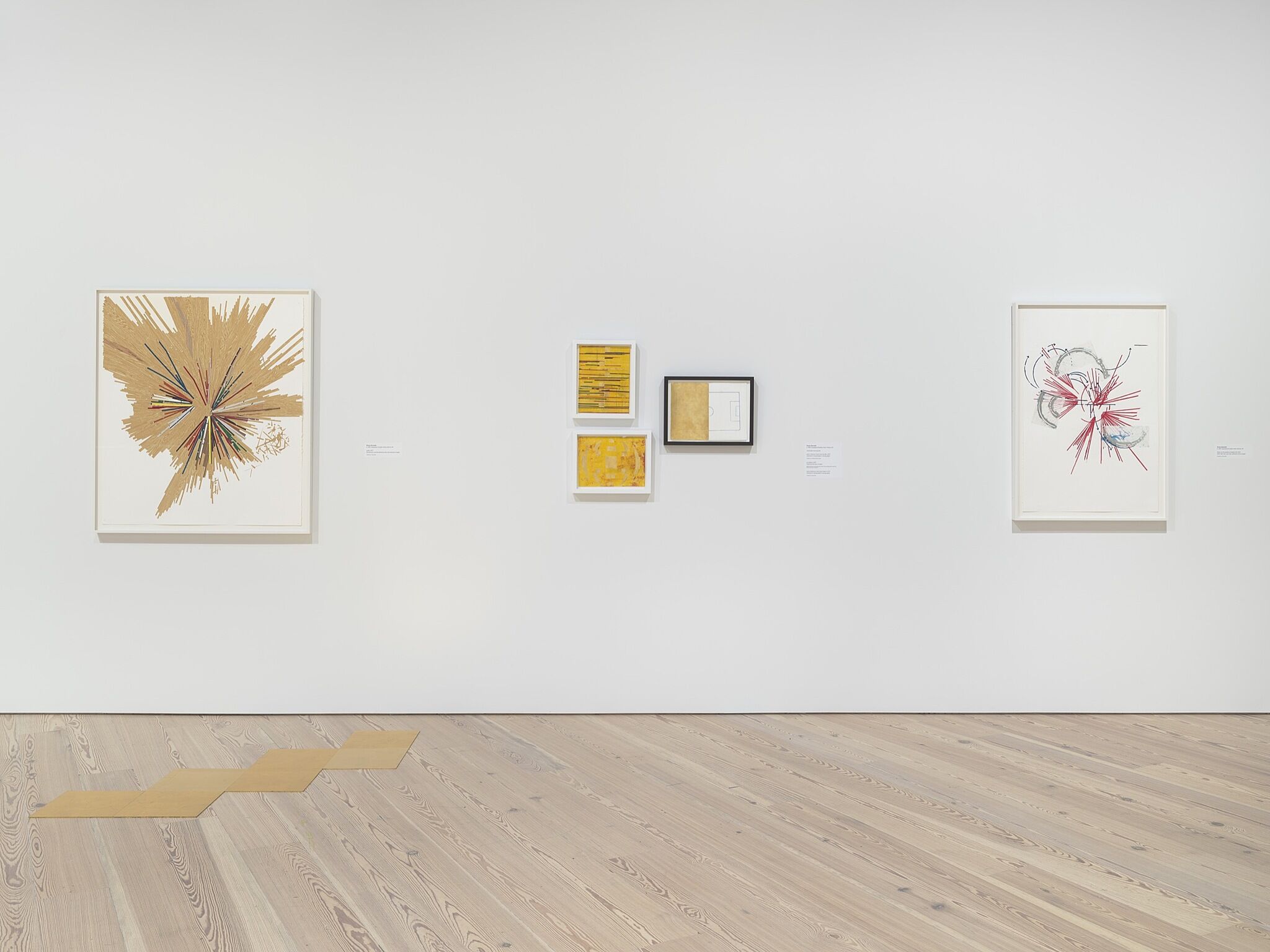

Installation view of Pacha, Llaqta, Wasichay: Indigenous Space, Modern Architecture, New Art (Whitney Museum of American Art, New York, July 13–September 30, 2018). From left to right: Ronny Quevedo, quipu, 2017; Ronny Quevedo, every measure of zero (wari textile), 2017; Ronny Quevedo, every measure of zero (up is down), 2017; Ronny Quevedo, oro blanco, 2017; Ronny Quevedo, Notes on the poetics of relation #2, 2015. Photograph by Ron Amstutz
-
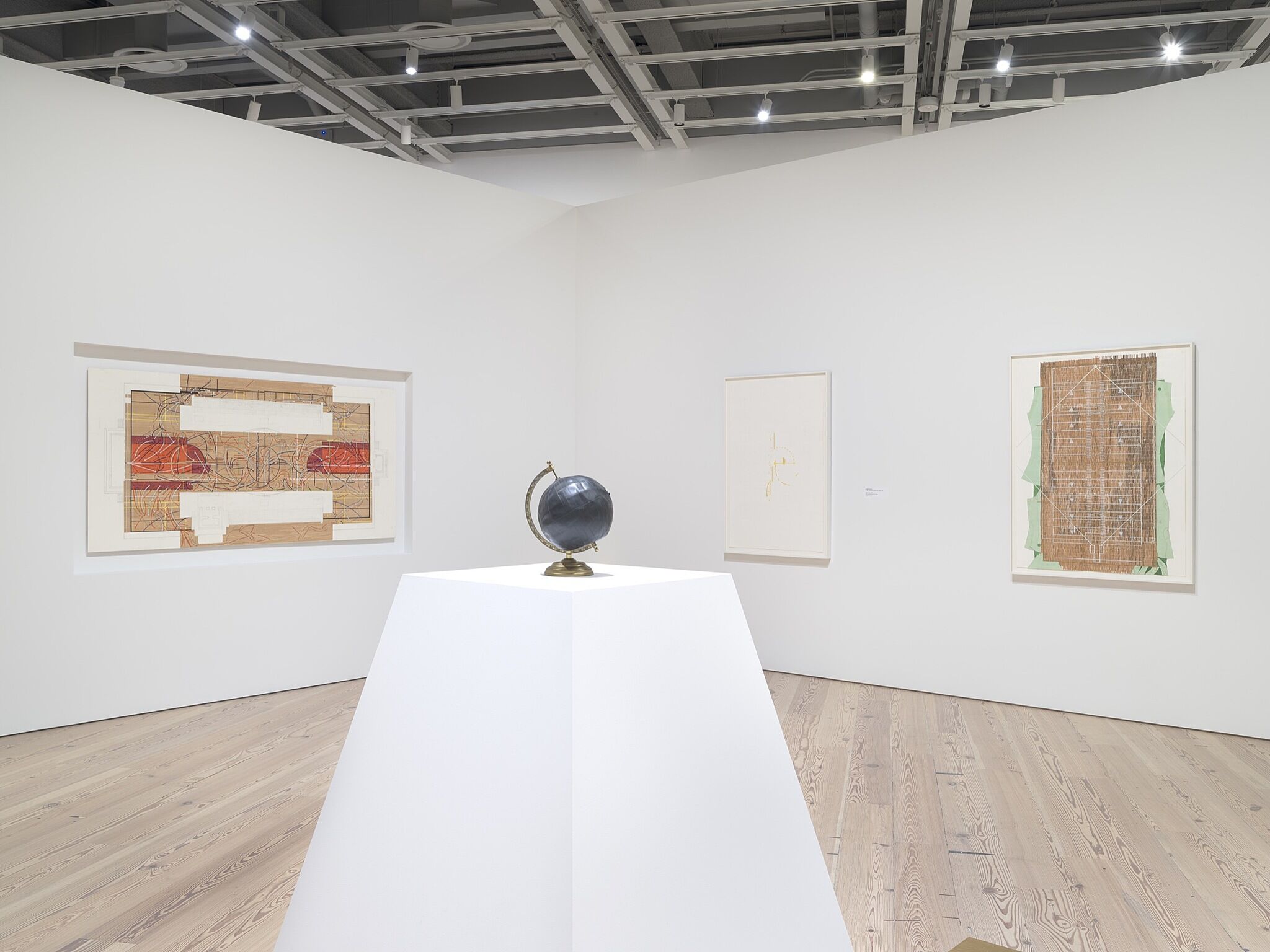

Installation view of Pacha, Llaqta, Wasichay: Indigenous Space, Modern Architecture, New Art (Whitney Museum of American Art, New York, July 13–September 30, 2018). From left to right: Ronny Quevedo, ULAMA-ULE-ALLEY OOP, 2017; Ronny Quevedo, Errant Globe, 2015; Ronny Quevedo, Field of Play, 2016; Ronny Quevedo, Cabeza Magica, 2012. Photograph by Ron Amstutz
-
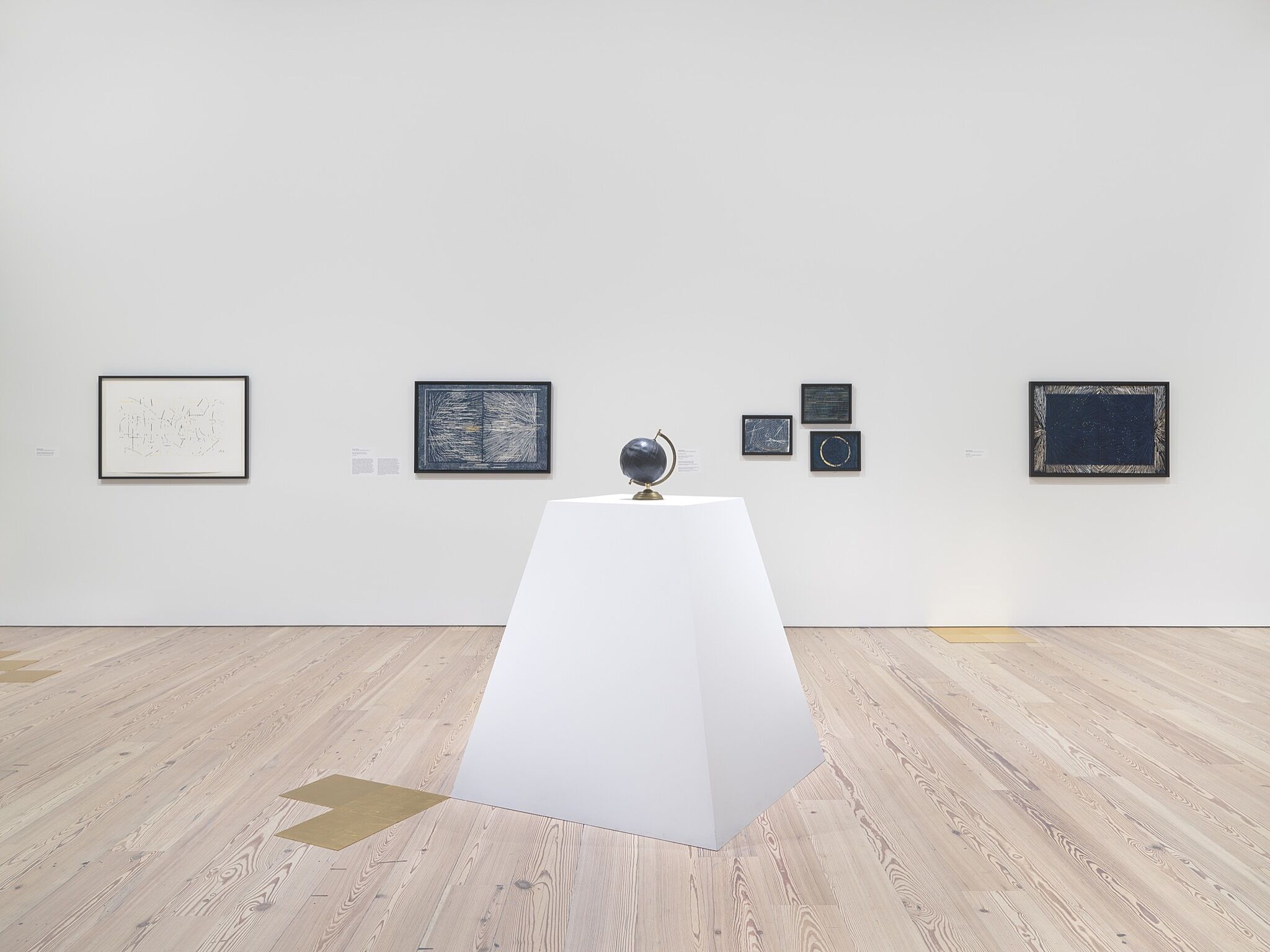

Installation view of Pacha, Llaqta, Wasichay: Indigenous Space, Modern Architecture, New Art (Whitney Museum of American Art, New York, July 13–September 30, 2018). From left to right: Ronny Quevedo, The Main Event (Nomadic Structures), 2016; Ronny Quevedo, origin points of lyra (5-3-2-1), 2017; Ronny Quevedo, Errant Globe, 2015; Ronny Quevedo, every measure of zero (Nazca beyond the plain), 2017; Ronny Quevedo, every measure of zero (errantry), 2017; Ronny Quevedo, every measure of zero (periphery), 2017; Ronny Quevedo, (lyra), 2017. Photograph by Ron Amstutz
-
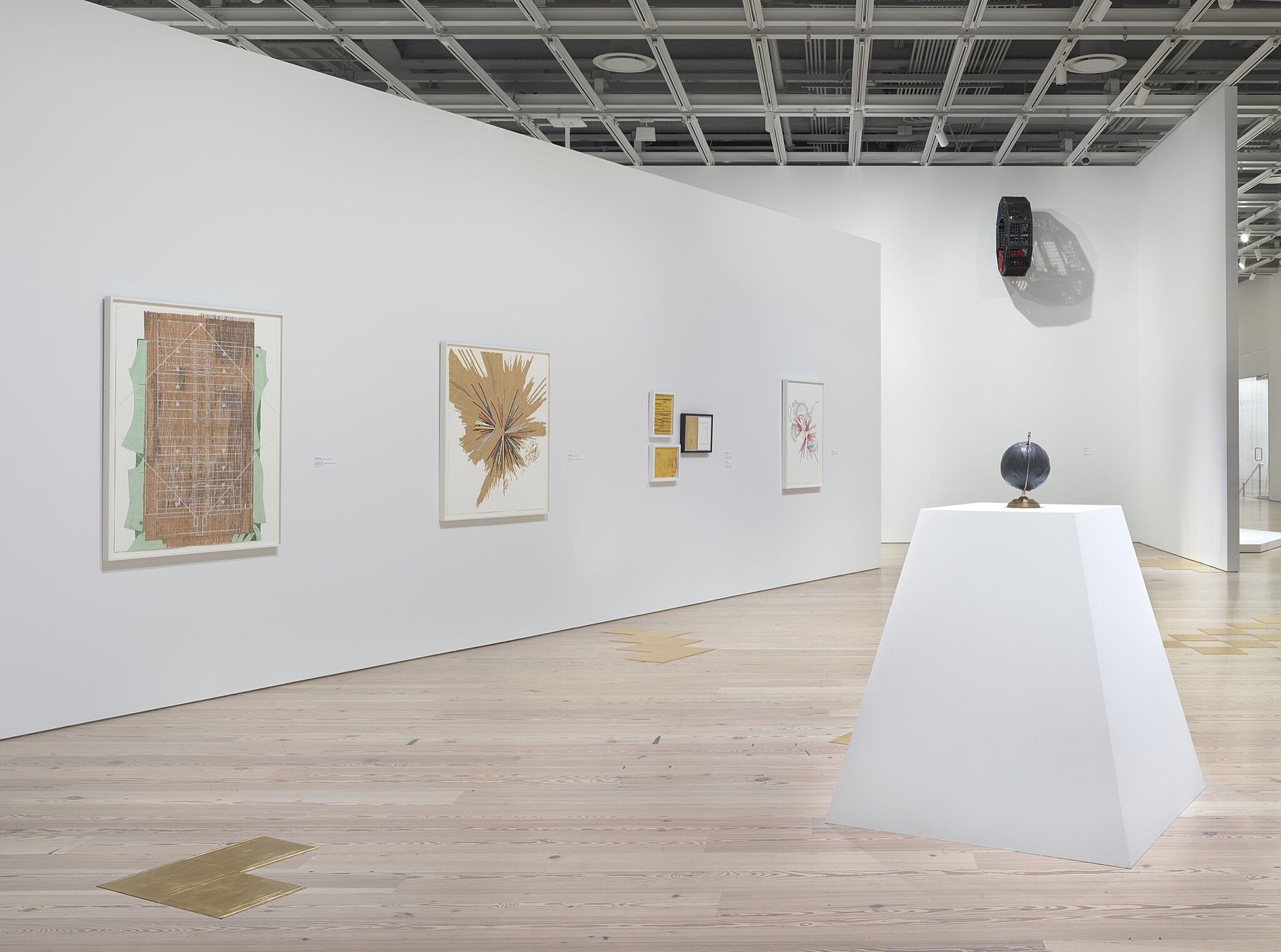

Installation view of Pacha, Llaqta, Wasichay: Indigenous Space, Modern Architecture, New Art (Whitney Museum of American Art, New York, July 13–September 30, 2018). From left to right: Ronny Quevedo, Cabeza Magica, 2012; Ronny Quevedo, quipu, 2017; Ronny Quevedo, every measure of zero (wari textile), 2017; Ronny Quevedo, every measure of zero (up is down), 2017; Ronny Quevedo, oro blanco, 2017; Ronny Quevedo, Notes on the poetics of relation #2, 2015; Ronny Quevedo, Ulama, Ule, Olé, 2012; Ronny Quevedo, Errant Globe, 2015. Photograph by Ron Amstutz
-
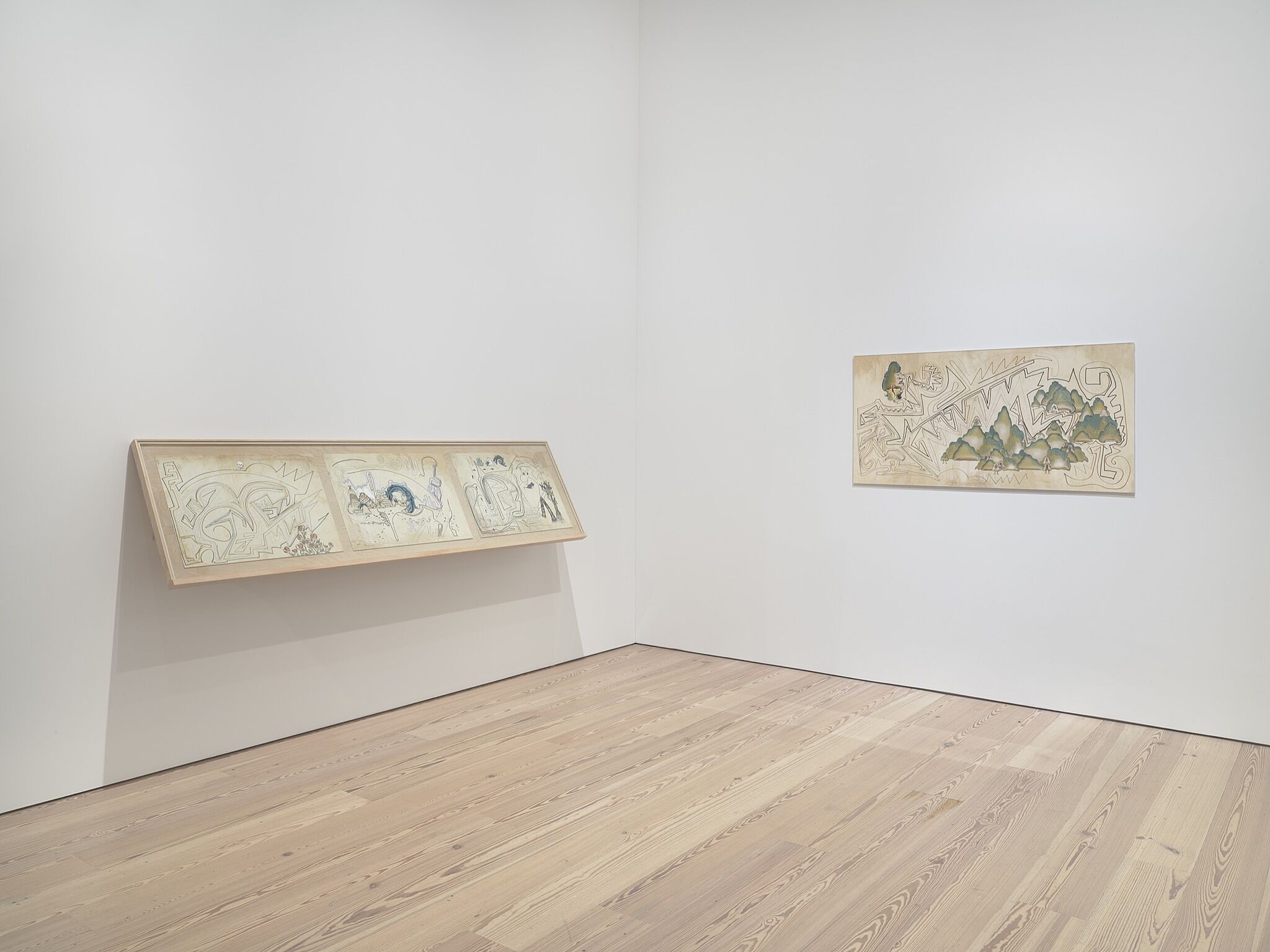

Installation view of Pacha, Llaqta, Wasichay: Indigenous Space, Modern Architecture, New Art (Whitney Museum of American Art, New York, July 13–September 30, 2018). From left to right: Guadalupe Maravilla, Requiem for my border crossing (Collaborative drawing between the undocumented) #8, 2018; Guadalupe Maravilla, Requiem for my border crossing (Collaborative drawing between the undocumented) #7, 2018; Guadalupe Maravilla, Requiem for my border crossing and my undocumented father’s #4, 2016–18; Guadalupe Maravilla, Requiem for my border crossing (Collaborative drawing between the undocumented) #11, 2018. Photograph by Ron Amstutz
-
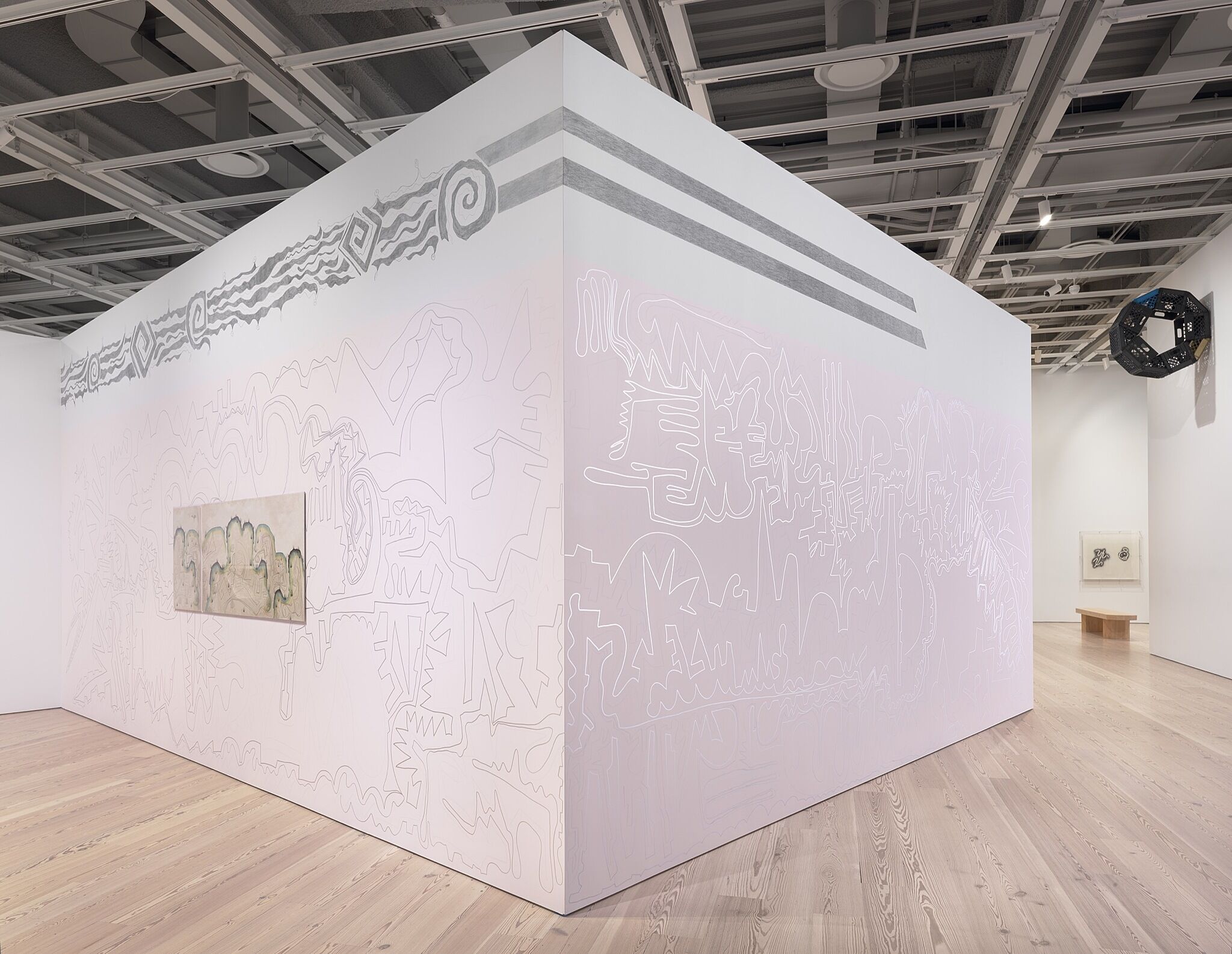

Installation view of Pacha, Llaqta, Wasichay: Indigenous Space, Modern Architecture, New Art (Whitney Museum of American Art, New York, July 13–September 30, 2018). From left to right: Guadalupe Maravilla, Tripa Chuca, 2018; Guadalupe Maravilla, Requiem for my border crossing (Collaborative drawing between the undocumented) #10, 2018; Monica Flaherty, Petroglyph studies at Coabey River, Jayuya, Puerto Rico, c. 1957; Ronny Quevedo, Ulama, Ule, Olé, 2012. Photograph by Ron Amstutz
-
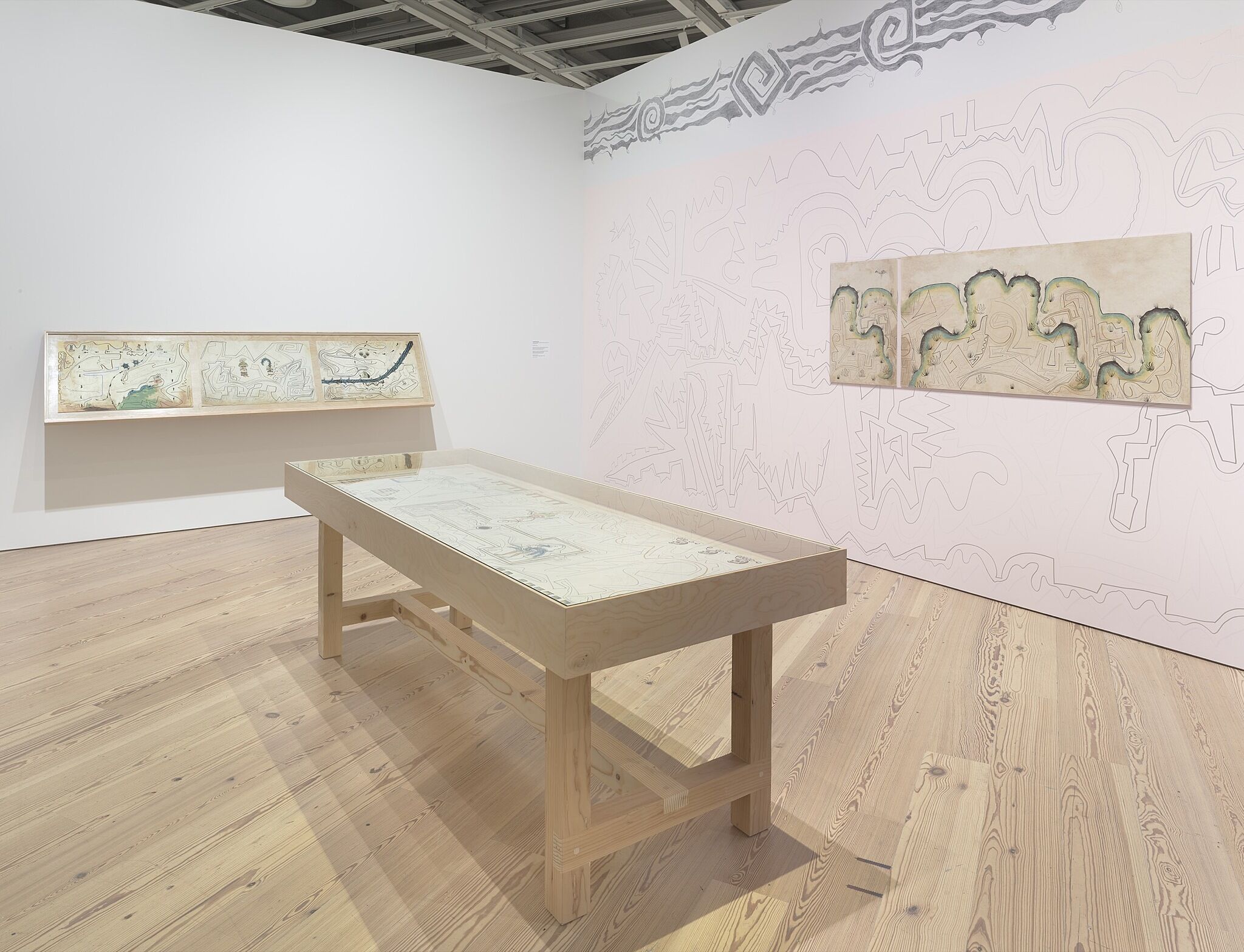

Installation view of Pacha, Llaqta, Wasichay: Indigenous Space, Modern Architecture, New Art (Whitney Museum of American Art, New York, July 13–September 30, 2018). From left to right: Guadalupe Maravilla, Requiem for my border crossing and my undocumented father’s #1, 2016–18; Guadalupe Maravilla, Requiem for my border crossing (Collaborative drawing between the undocumented) #9, 2018; Guadalupe Maravilla, Requiem for my border crossing and my undocumented father’s #6, 2016–18; Guadalupe Maravilla, Requiem for my border crossing (Collaborative drawing between the undocumented) #12, 2018; Guadalupe Maravilla, Tripa Chuca, 2018; Guadalupe Maravilla, Requiem for my border crossing (Collaborative drawing between the undocumented) #3, 2016–18; Guadalupe Maravilla, Requiem for my border crossing (Collaborative drawing between the undocumented) #10, 2018. Photograph by Ron Amstutz
-


Installation view of Pacha, Llaqta, Wasichay: Indigenous Space, Modern Architecture, New Art (Whitney Museum of American Art, New York, July 13–September 30, 2018). From left to right: Guadalupe Maravilla, Tripa Chuca, 2018; Guadalupe Maravilla, Requiem for my border crossing (Collaborative drawing between the undocumented) #3, 2016–18; Guadalupe Maravilla, Requiem for my border crossing (Collaborative drawing between the undocumented) #10, 2018; Guadalupe Maravilla, Requiem for my border crossing (Collaborative drawing between the undocumented) #12, 2018; Guadalupe Maravilla, Requiem for my border crossing (Collaborative drawing between the undocumented) #8, 2018; Guadalupe Maravilla, Requiem for my border crossing (Collaborative drawing between the undocumented) #7, 2018; Guadalupe Maravilla, Requiem for my border crossing and my undocumented father’s #4, 2016–18; Guadalupe Maravilla, Requiem for my border crossing (Collaborative drawing between the undocumented) #11, 2018. Photograph by Ron Amstutz
-
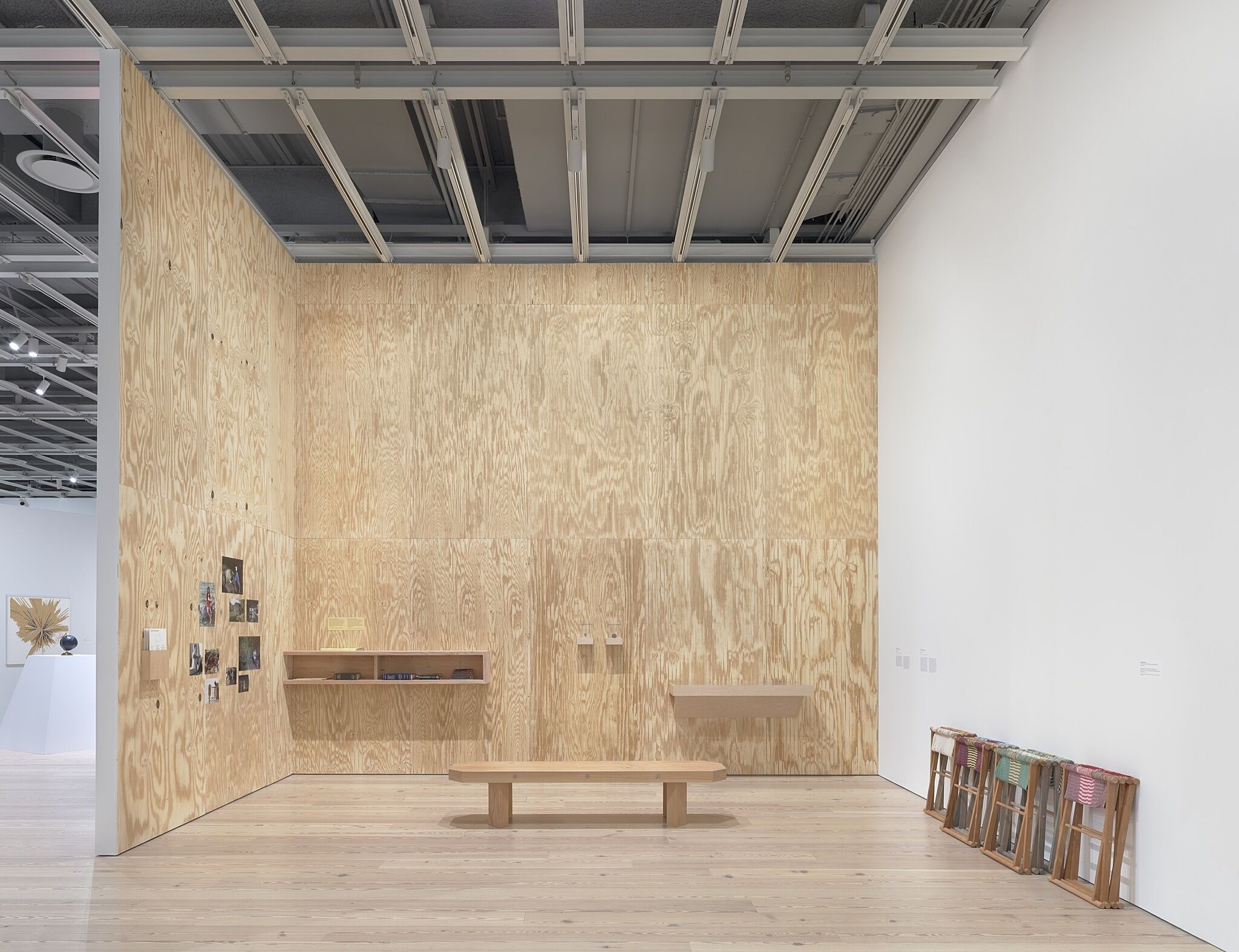

Installation view of Pacha, Llaqta, Wasichay: Indigenous Space, Modern Architecture, New Art (Whitney Museum of American Art, New York, July 13–September 30, 2018). From left to right: Ronny Quevedo, quipu, 2017; Ronny Quevedo, Errant Globe, 2015; Clockwise, from top left: Alice, n.d.; Robinson, 2017; Secador (Dryer), 2016; Las Lunas, Caguas, Puerto Rico, 2017; Fernando, n.d.; Taller Cabachuela (Cabachuela Workshop), n.d.; Eustaquio, 2016; La Pintadera (Stamp), 2016; Guadalupe, 2016; Monotipo (Monotype), 2016; Center of wall, left to right: Taíno culture, Dominican Republic, Amulet, 1200–1500; Pre-Taíno culture, Dominican Republic, Antillean calendar or seal, n.d.; On right: Jorge González, Banquetas Chévere (Chévere Stools), 2018. Photograph by Ron Amstutz
-
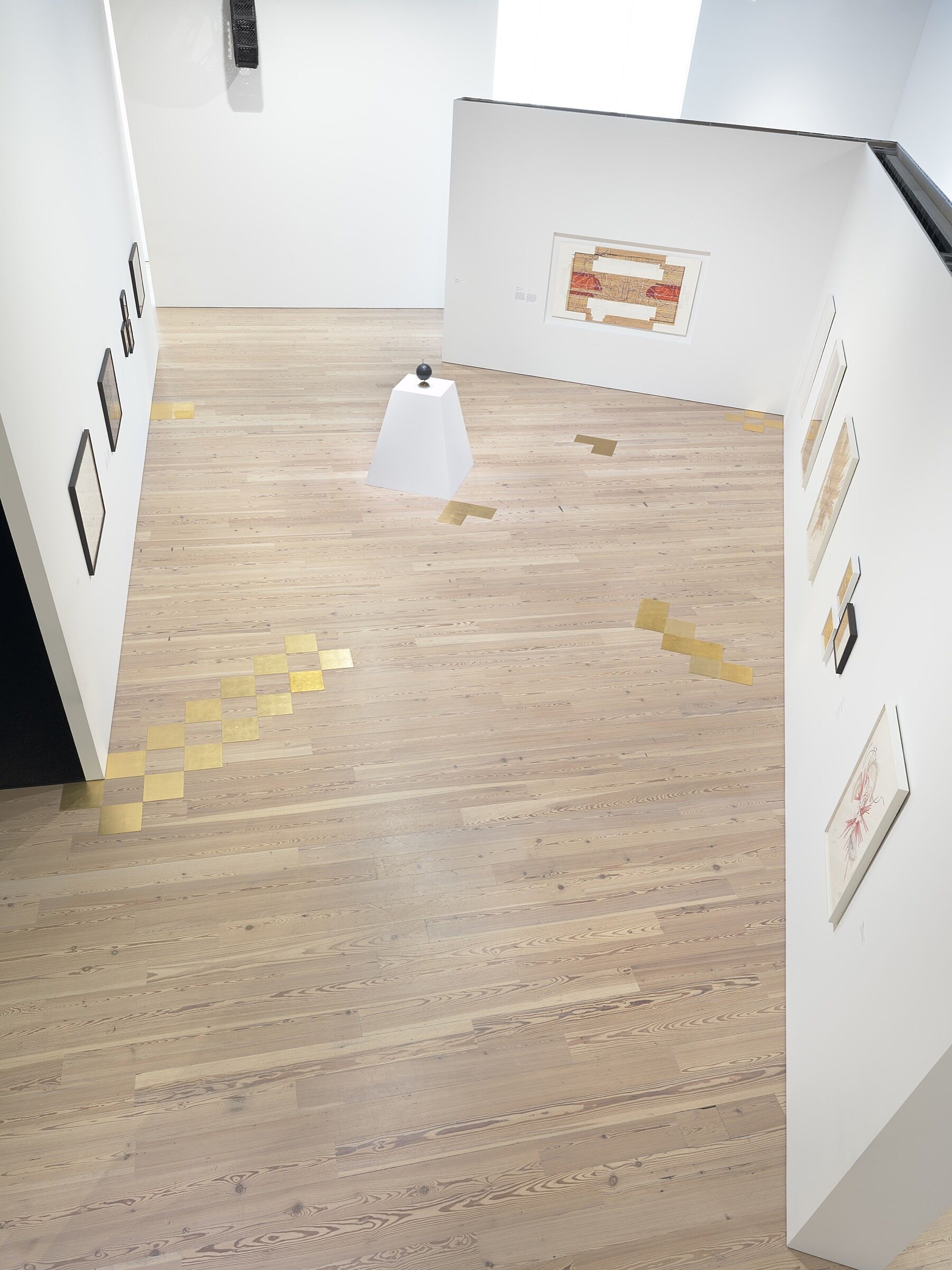

Installation view of Pacha, Llaqta, Wasichay: Indigenous Space, Modern Architecture, New Art (Whitney Museum of American Art, New York, July 13–September 30, 2018). Clockwise, from bottom left: Ronny Quevedo, The Main Event (Nomadic Structures), 2016; Ronny Quevedo, origin points of lyra (5-3-2-1), 2017; Ronny Quevedo, every measure of zero (Nazca beyond the plain), 2017; Ronny Quevedo, every measure of zero (errantry), 2017; Ronny Quevedo, every measure of zero (periphery), 2017; Ronny Quevedo, (lyra), 2017; Ronny Quevedo, Errant Globe, 2015; Ronny Quevedo, ULAMA-ULE-ALLEY OOP, 2017; Ronny Quevedo, Field of Play, 2016; Ronny Quevedo, Cabeza Magica, 2012. Installed on floor: Ronny Quevedo, Orders of Magnitude (desde Qoricancha), 2018. Photograph by Ron Amstutz
-
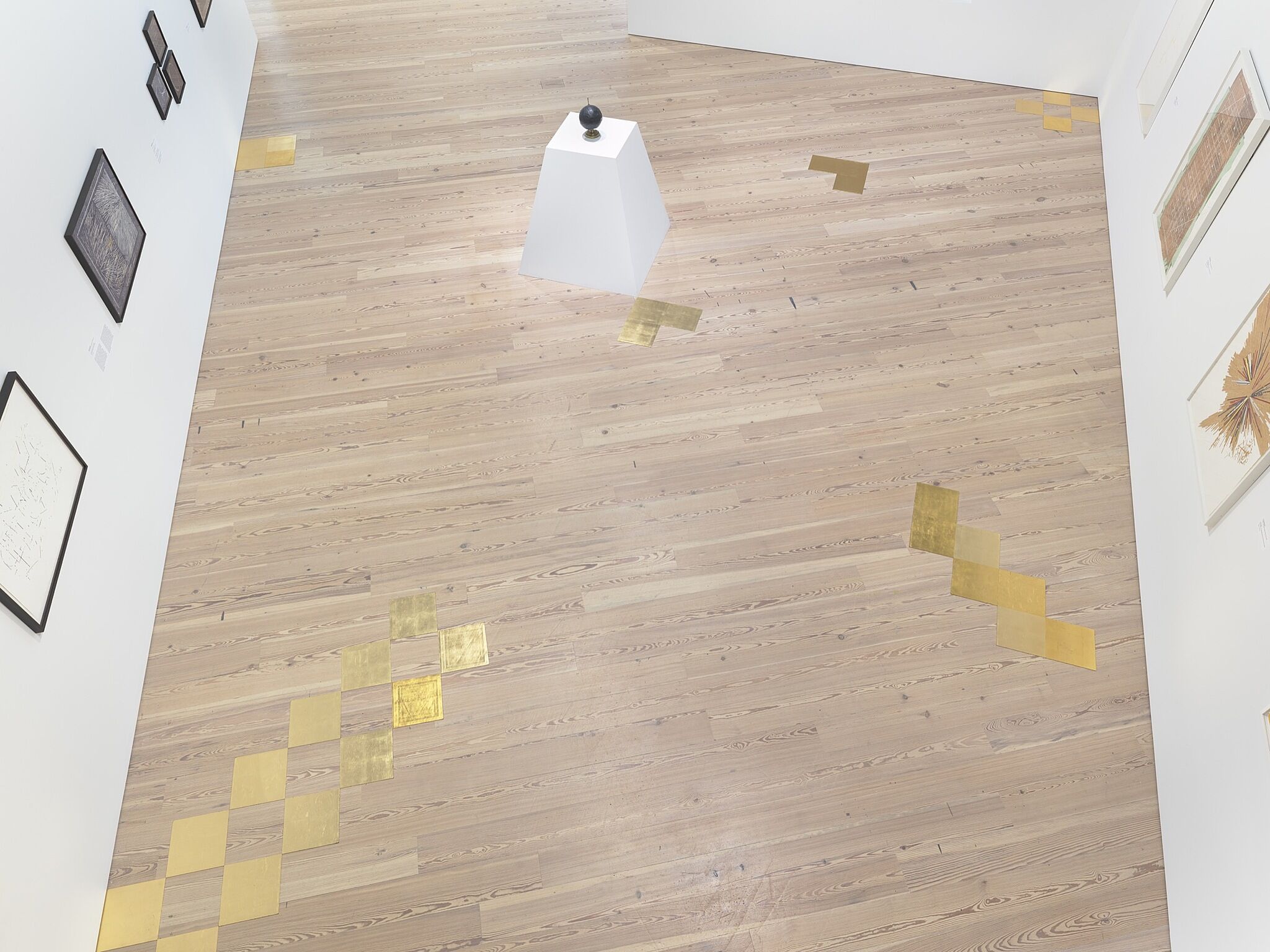

Installation view of Pacha, Llaqta, Wasichay: Indigenous Space, Modern Architecture, New Art (Whitney Museum of American Art, New York, July 13–September 30, 2018). Clockwise, from bottom left: Ronny Quevedo, The Main Event (Nomadic Structures), 2016; Ronny Quevedo, origin points of lyra (5-3-2-1), 2017; Ronny Quevedo, every measure of zero (Nazca beyond the plain), 2017; Ronny Quevedo, every measure of zero (errantry), 2017; Ronny Quevedo, every measure of zero (periphery), 2017; Ronny Quevedo, (lyra), 2017; Ronny Quevedo, Errant Globe, 2015; Ronny Quevedo, Field of Play, 2016; Ronny Quevedo, Cabeza Magica, 2012; Ronny Quevedo, quipu, 2017. Installed on floor: Ronny Quevedo, Orders of Magnitude (desde Qoricancha), 2018. Photograph by Ron Amstutz
-
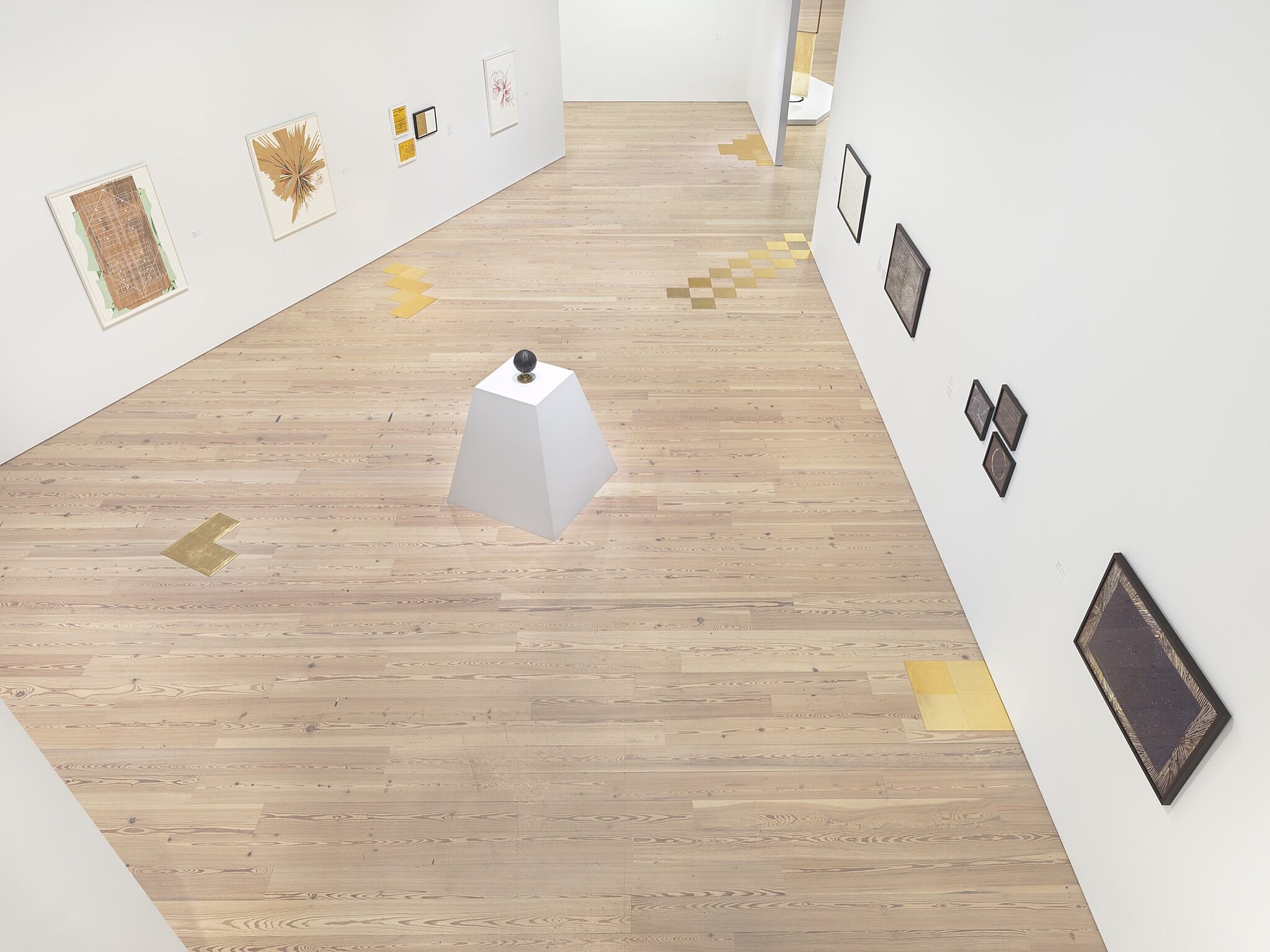

Installation view of Pacha, Llaqta, Wasichay: Indigenous Space, Modern Architecture, New Art (Whitney Museum of American Art, New York, July 13–September 30, 2018). Clockwise, from top left: Ronny Quevedo, Cabeza Magica, 2012; Ronny Quevedo, quipu, 2017; Ronny Quevedo, every measure of zero (wari textile), 2017; Ronny Quevedo, every measure of zero (up is down), 2017; Ronny Quevedo, oro blanco, 2017; Ronny Quevedo, Notes on the poetics of relation #2, 2015; Clarissa Tossin, Yaxchilán Lintel 25 (feathered serpent), 2017; Ronny Quevedo, The Main Event (Nomadic Structures), 2016; Ronny Quevedo, origin points of lyra (5-3-2-1), 2017; Ronny Quevedo, Errant Globe, 2015. Installed on floor: Ronny Quevedo, Orders of Magnitude (desde Qoricancha), 2018. Photograph by Ron Amstutz
-
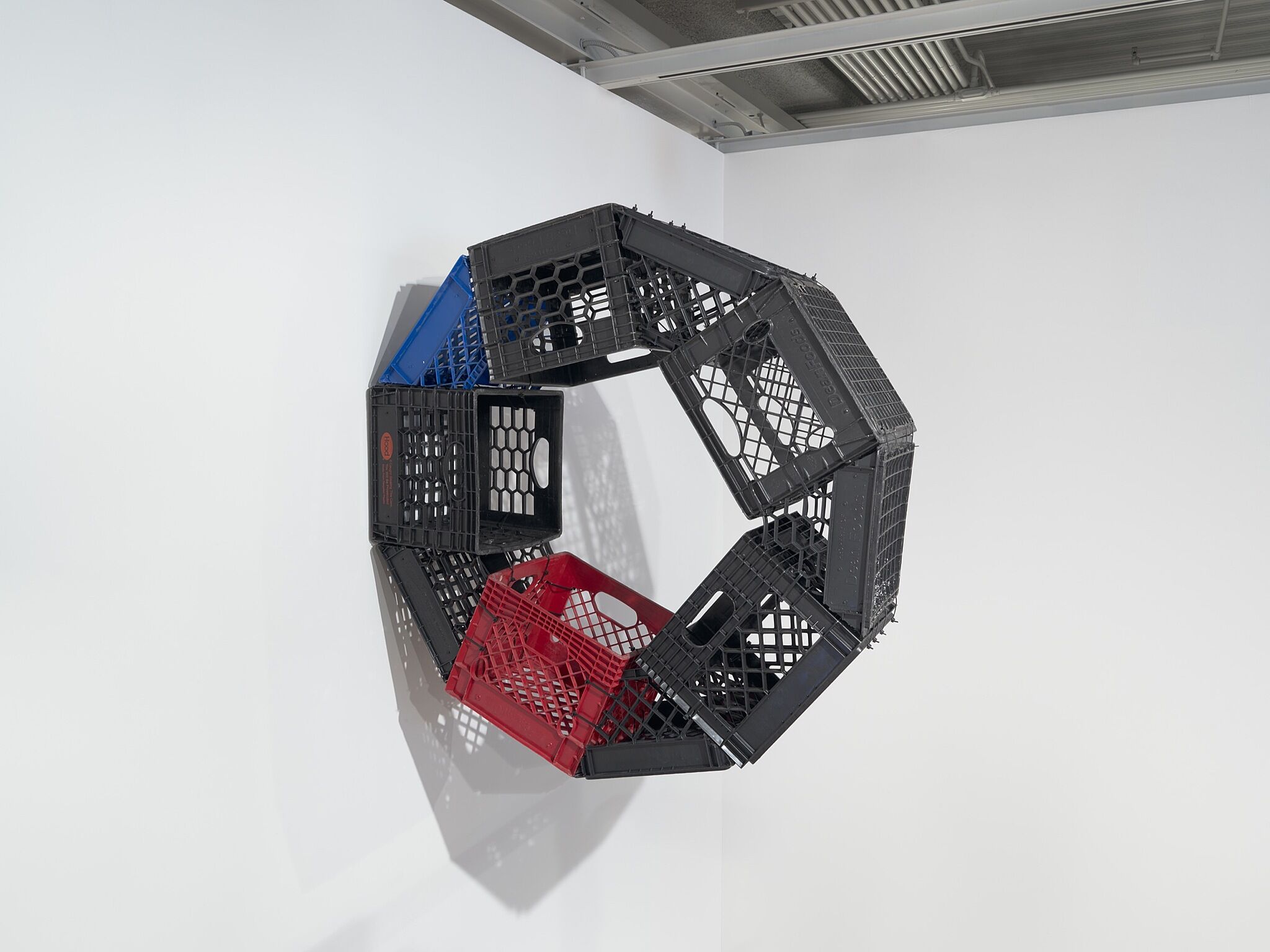

Ronny Quevedo (b. 1981), Ulama, Ule, Olé, 2012 (installation view, Pacha, Llaqta, Wasichay: Indigenous Space, Modern Architecture, New Art, Whitney Museum of American Art, New York, July 13–September 30, 2018). Milk crates and zipties, two parts, dimensions variable. Collection of the artist. Photograph by Ron Amstutz
-


Ronny Quevedo (b. 1981), Ulama, Ule, Olé, 2012 (installation view, Pacha, Llaqta, Wasichay: Indigenous Space, Modern Architecture, New Art, Whitney Museum of American Art, New York, July 13–September 30, 2018). Milk crates and zipties, two parts, dimensions variable. Collection of the artist. Photograph by Ron Amstutz
-
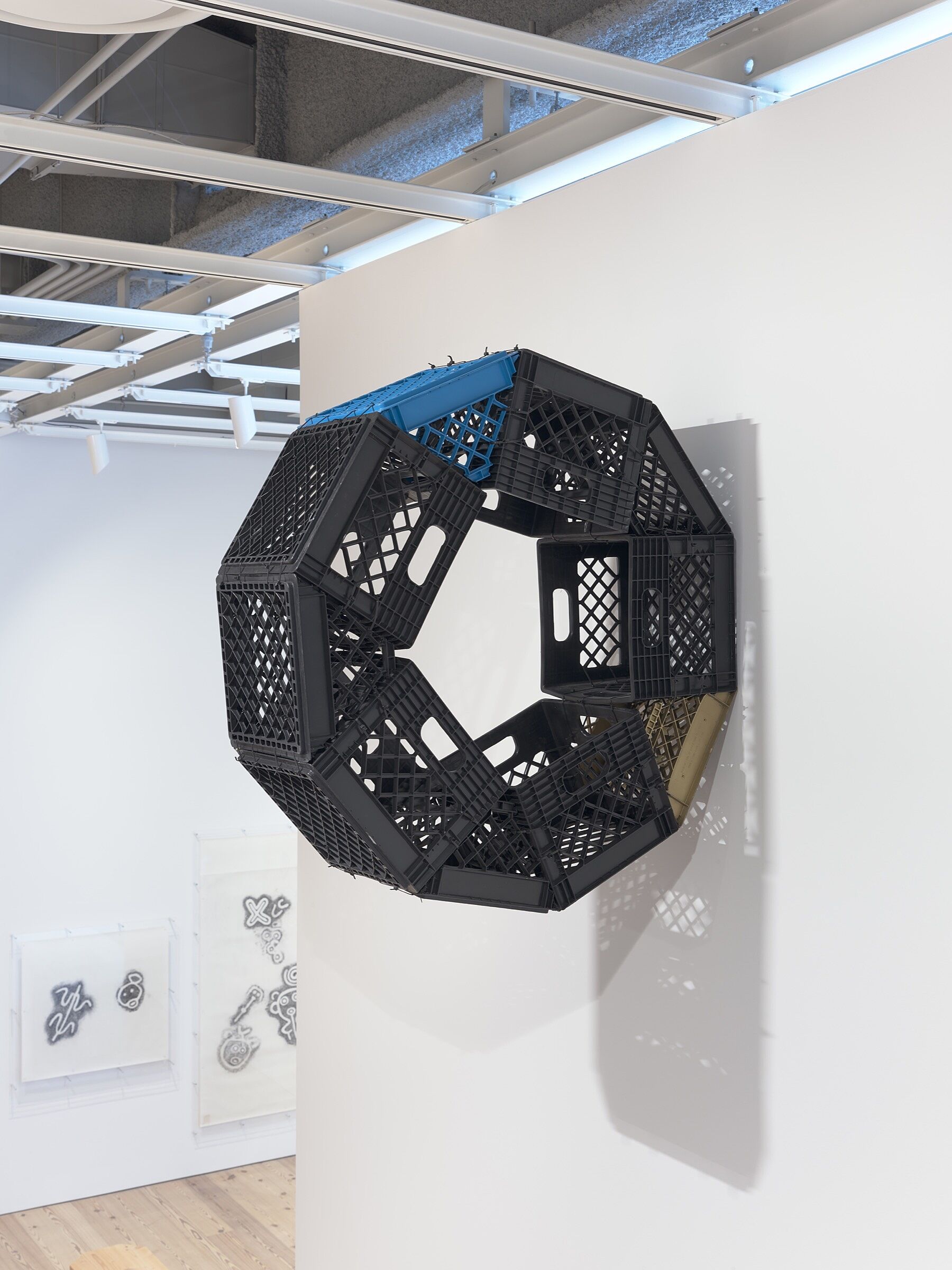

Ronny Quevedo (b. 1981), Ulama, Ule, Olé, 2012 (installation view, Pacha, Llaqta, Wasichay: Indigenous Space, Modern Architecture, New Art, Whitney Museum of American Art, New York, July 13–September 30, 2018). Milk crates and zipties, two parts, dimensions variable. Collection of the artist. Photograph by Ron Amstutz
-
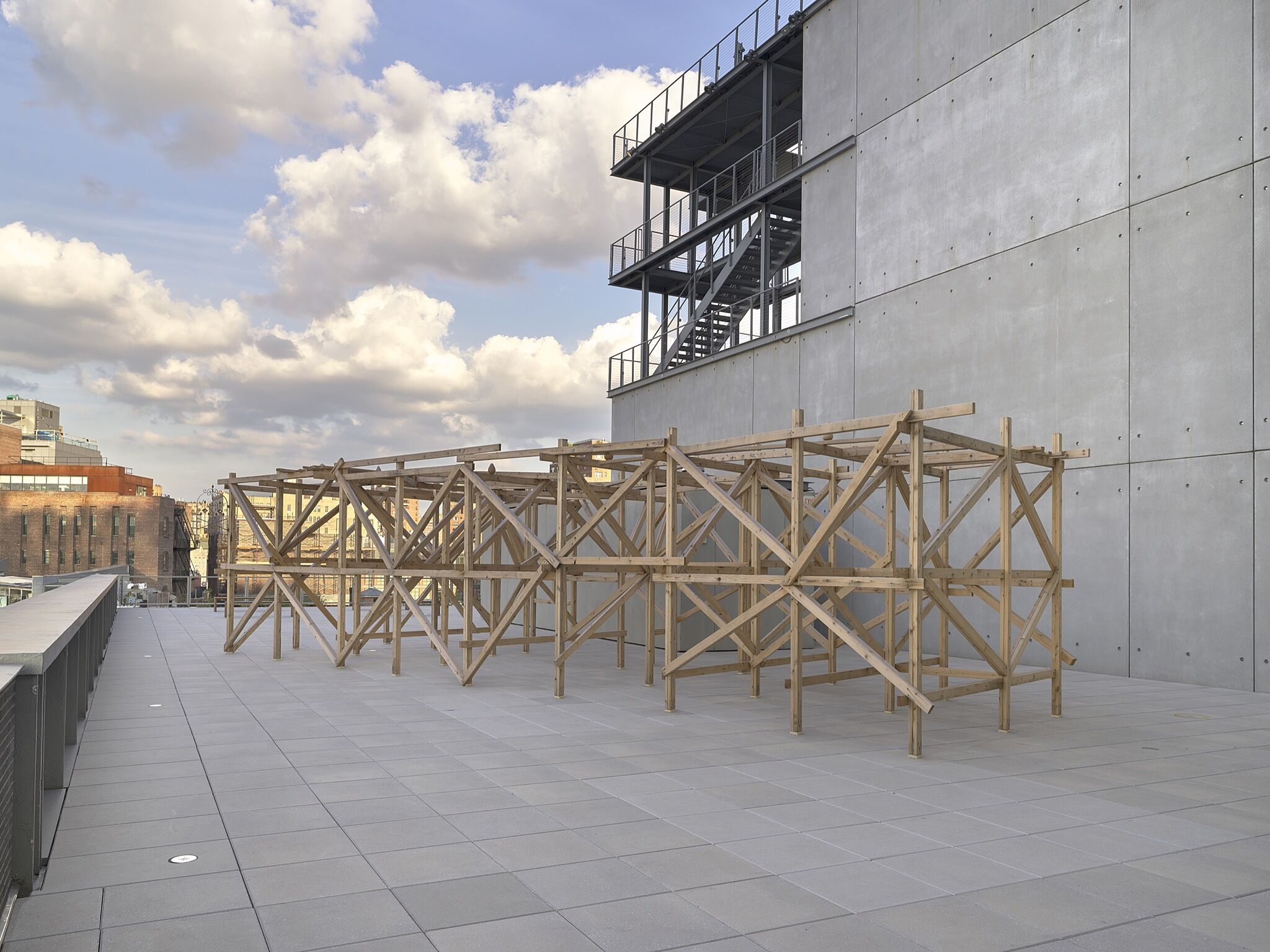

william cordova (b. 1971), huaca (sacred geometries), 2018 (installation view, Pacha, Llaqta, Wasichay: Indigenous Space, Modern Architecture, New Art, Whitney Museum of American Art, New York, July 13–September 30, 2018). Wood and stainless steel, dimensions variable. Collection of the artist; courtesy of Sikkema Jenkins and Co., New York. Photograph by Ron Amstutz
-
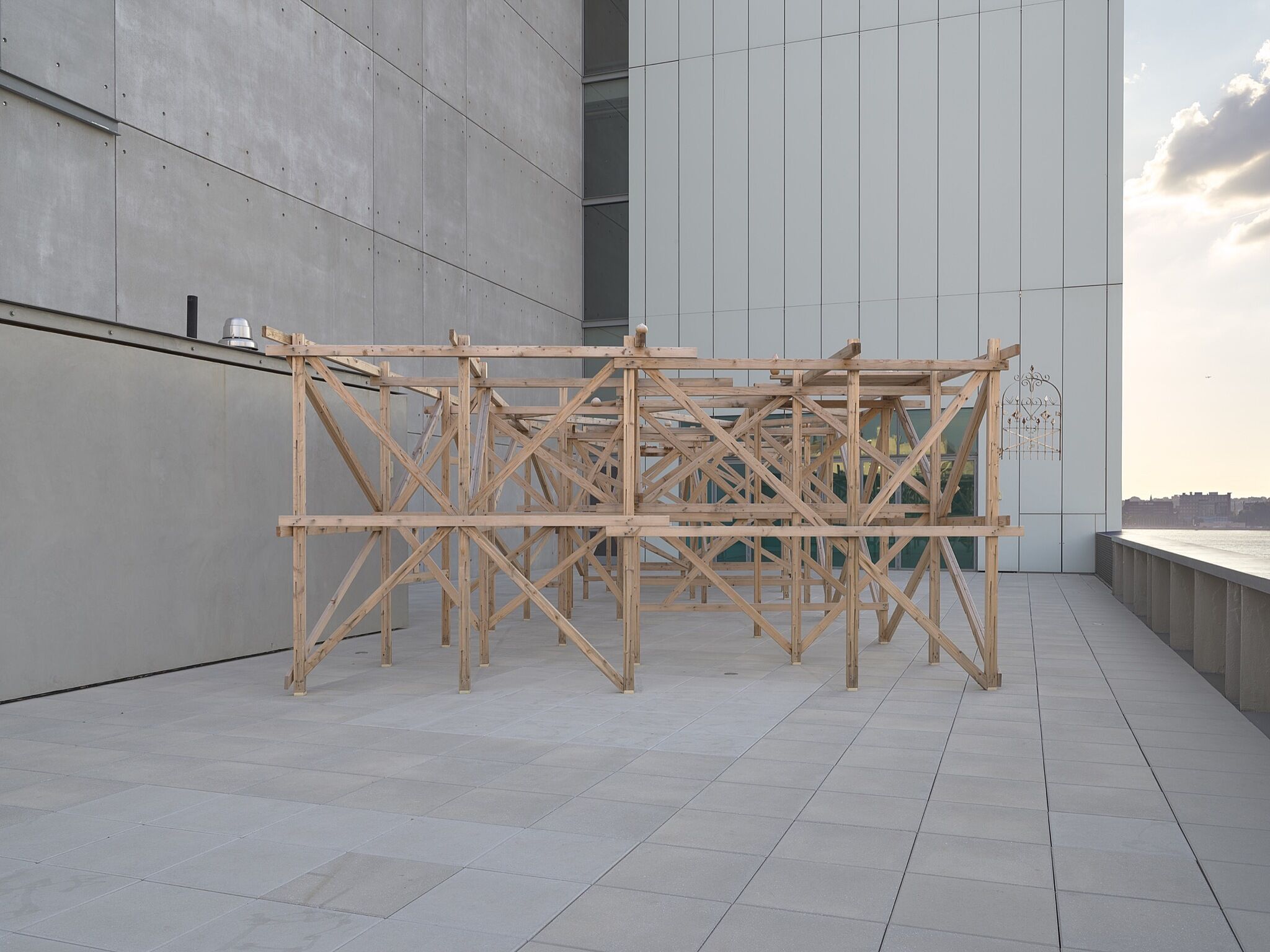

william cordova (b. 1971), huaca (sacred geometries), 2018 (installation view, Pacha, Llaqta, Wasichay: Indigenous Space, Modern Architecture, New Art, Whitney Museum of American Art, New York, July 13–September 30, 2018). Wood and stainless steel, dimensions variable. Collection of the artist; courtesy of Sikkema Jenkins and Co., New York. Photograph by Ron Amstutz
-
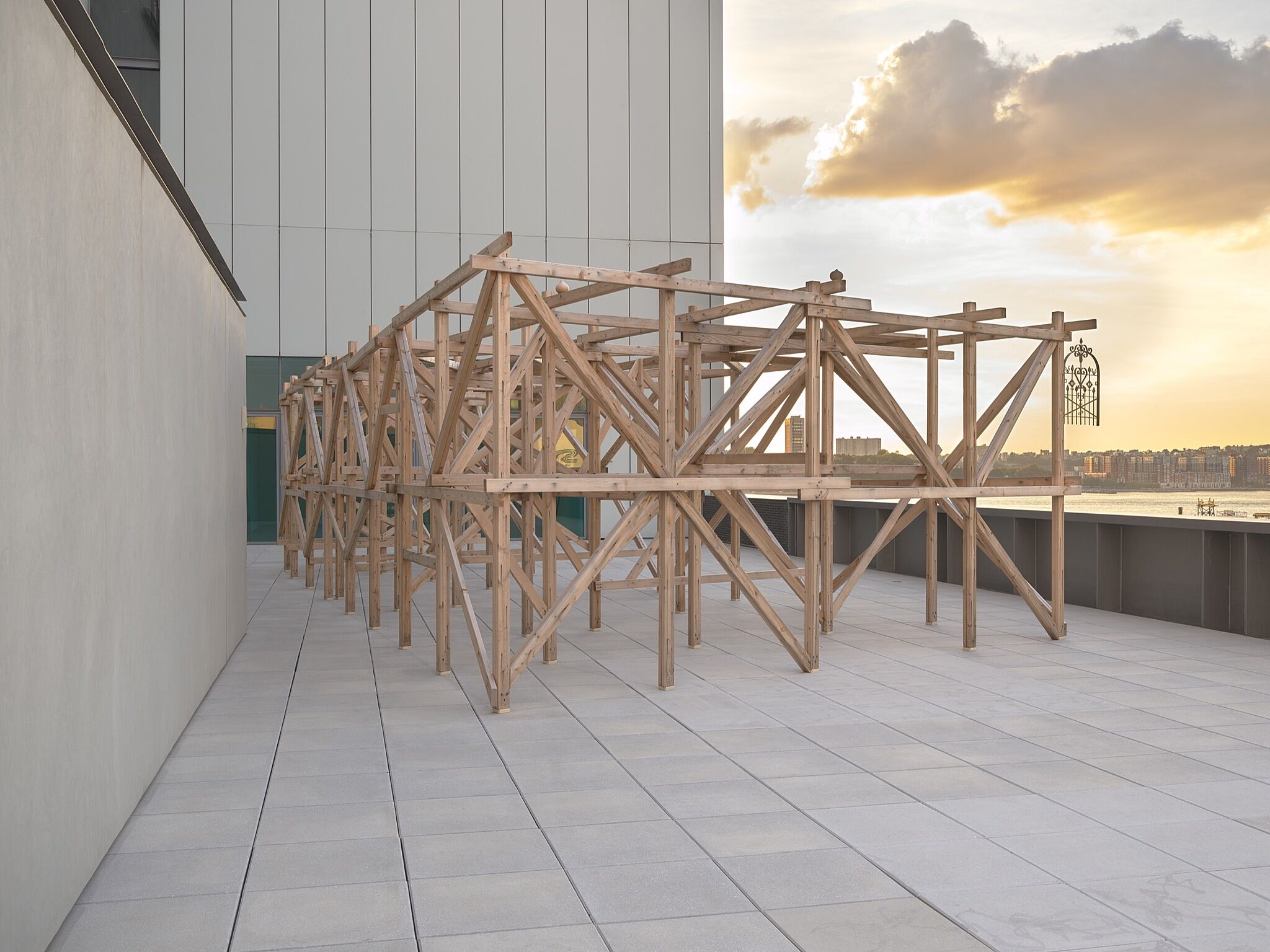

william cordova (b. 1971), huaca (sacred geometries), 2018 (installation view, Pacha, Llaqta, Wasichay: Indigenous Space, Modern Architecture, New Art, Whitney Museum of American Art, New York, July 13–September 30, 2018). Wood and stainless steel, dimensions variable. Collection of the artist; courtesy of Sikkema Jenkins and Co., New York. Photograph by Ron Amstutz
In the News
“As indicated by its Quechuan title, to describe the world and its structures in both nuanced yet manifold ways is, in turn, the central premise of this exhibition.”
—Cultbytes

